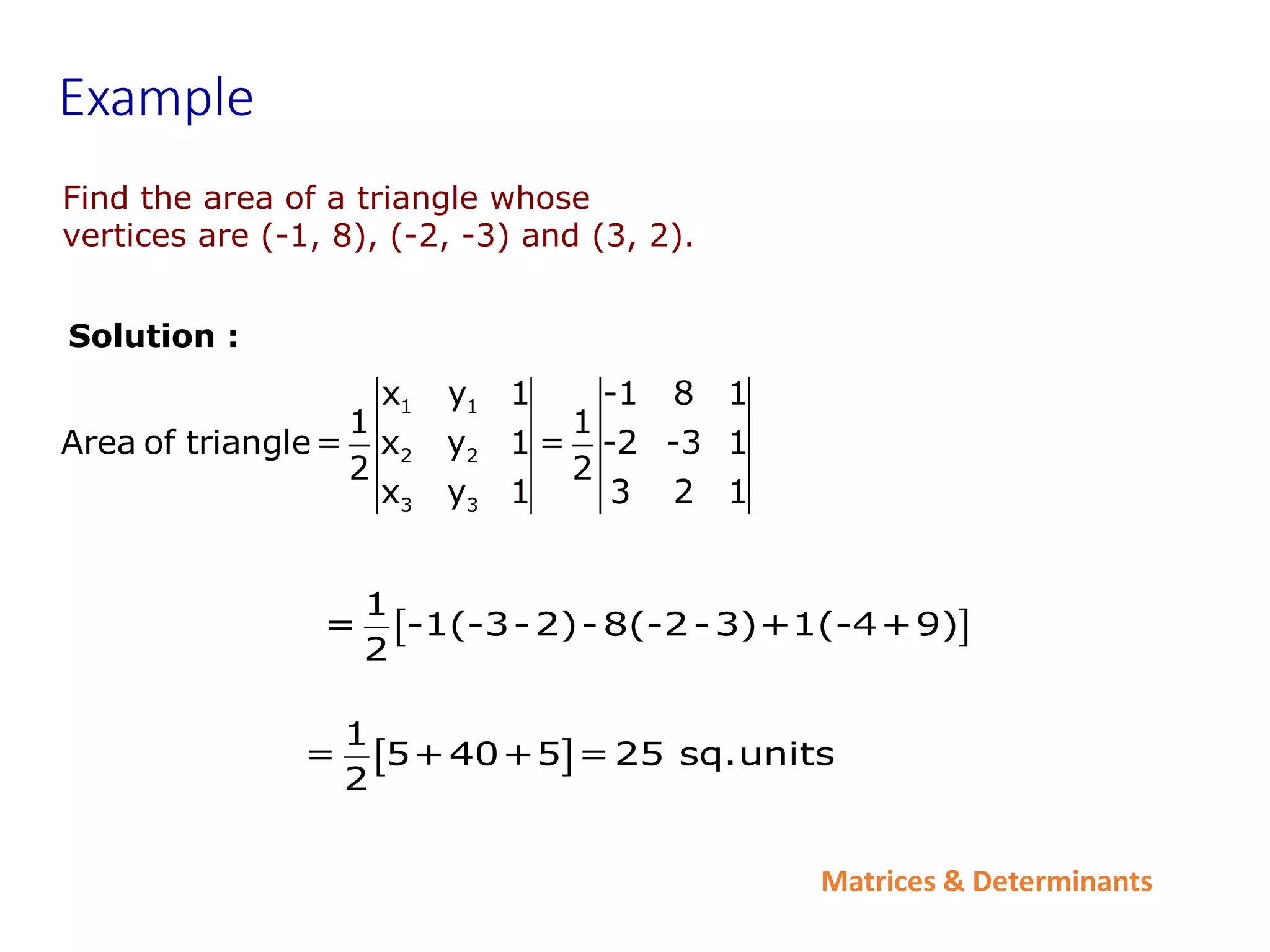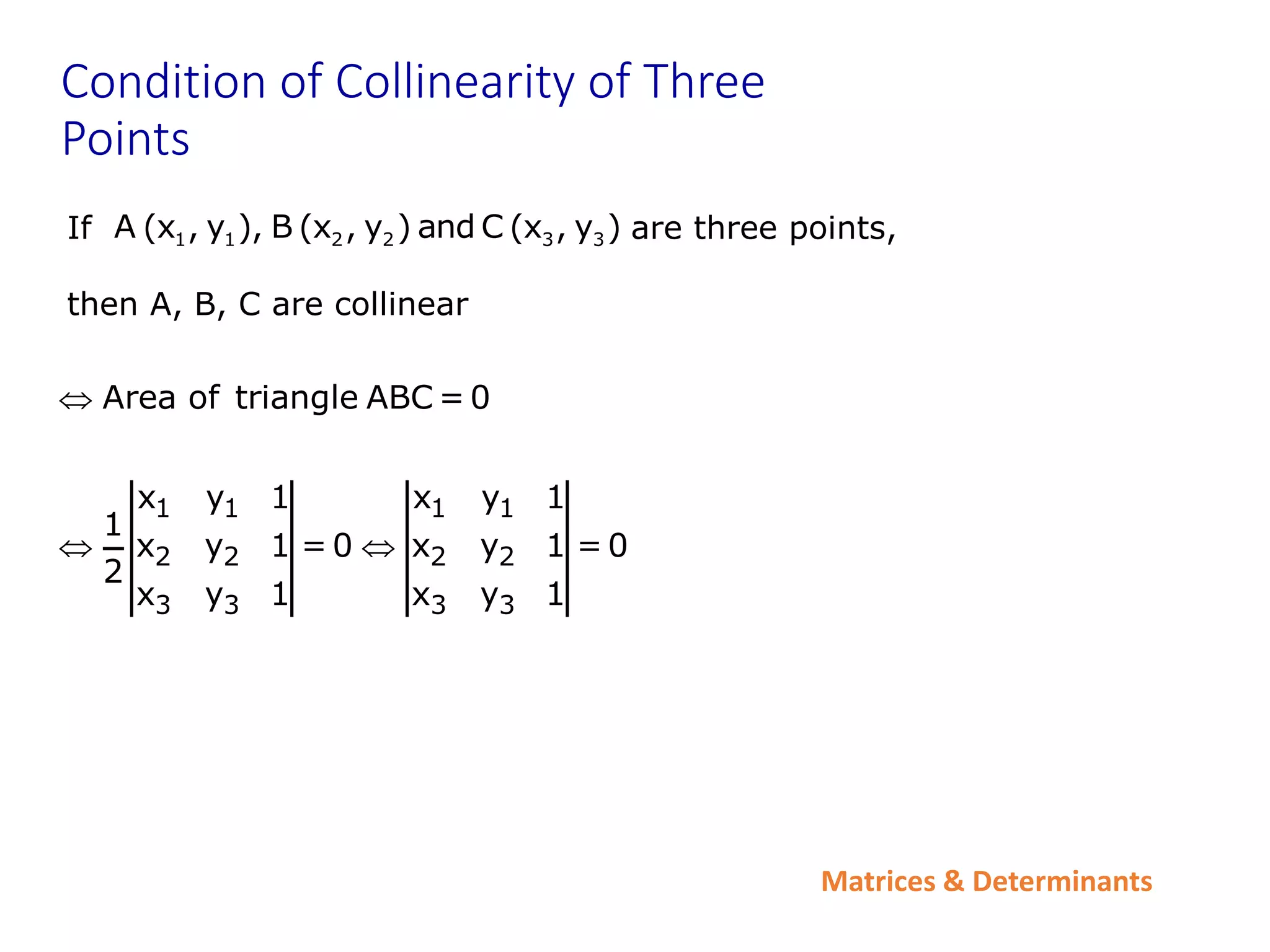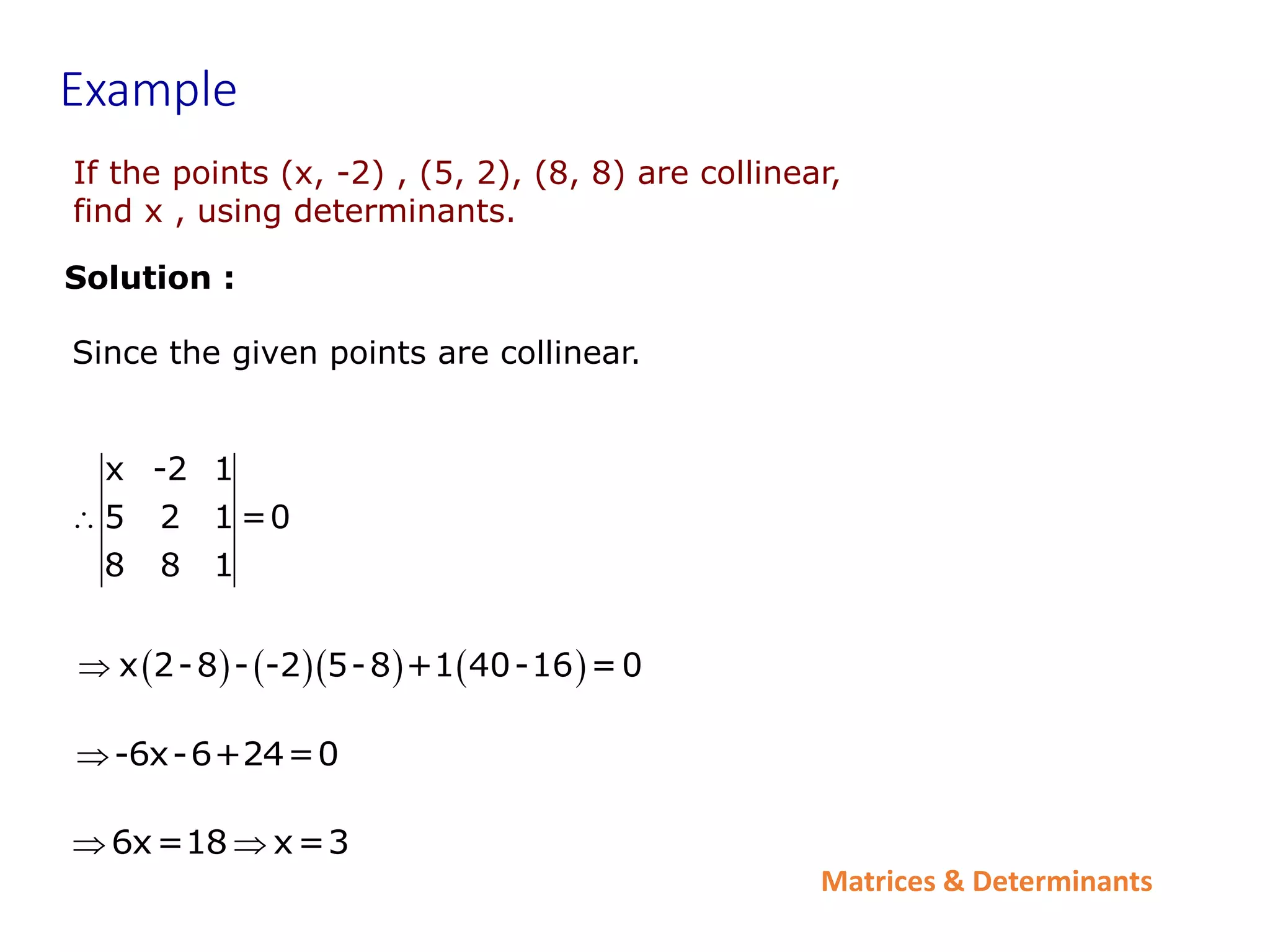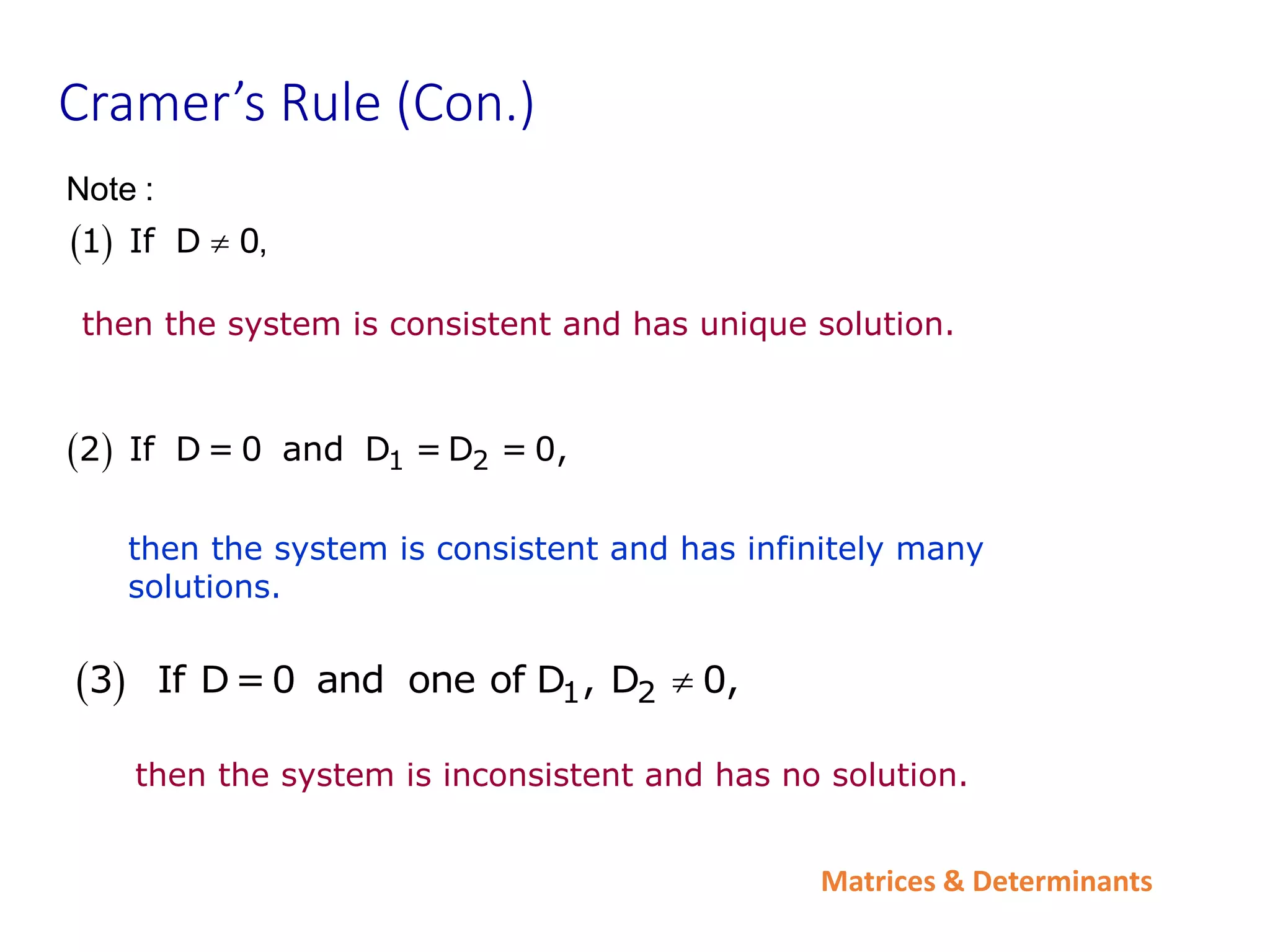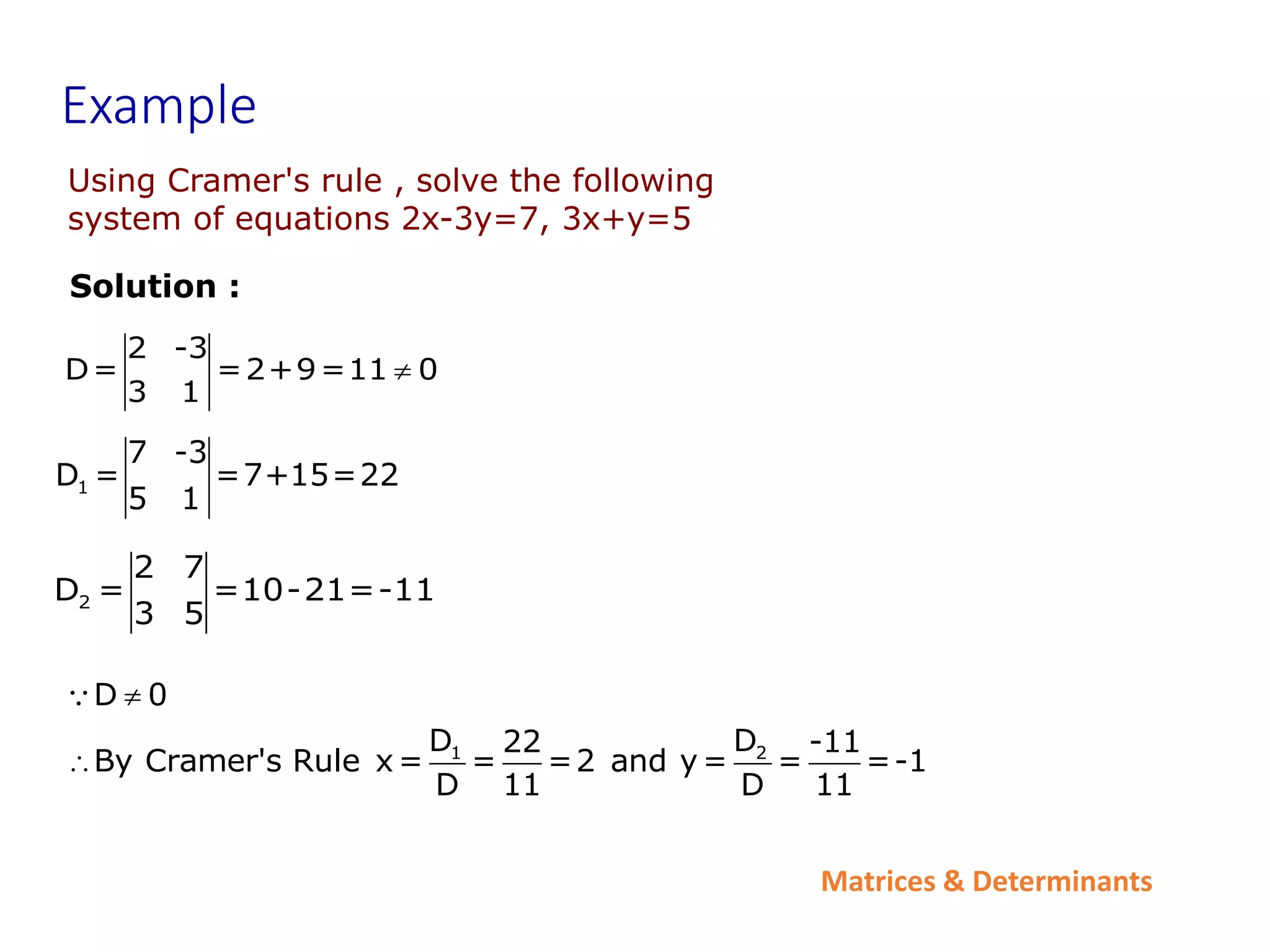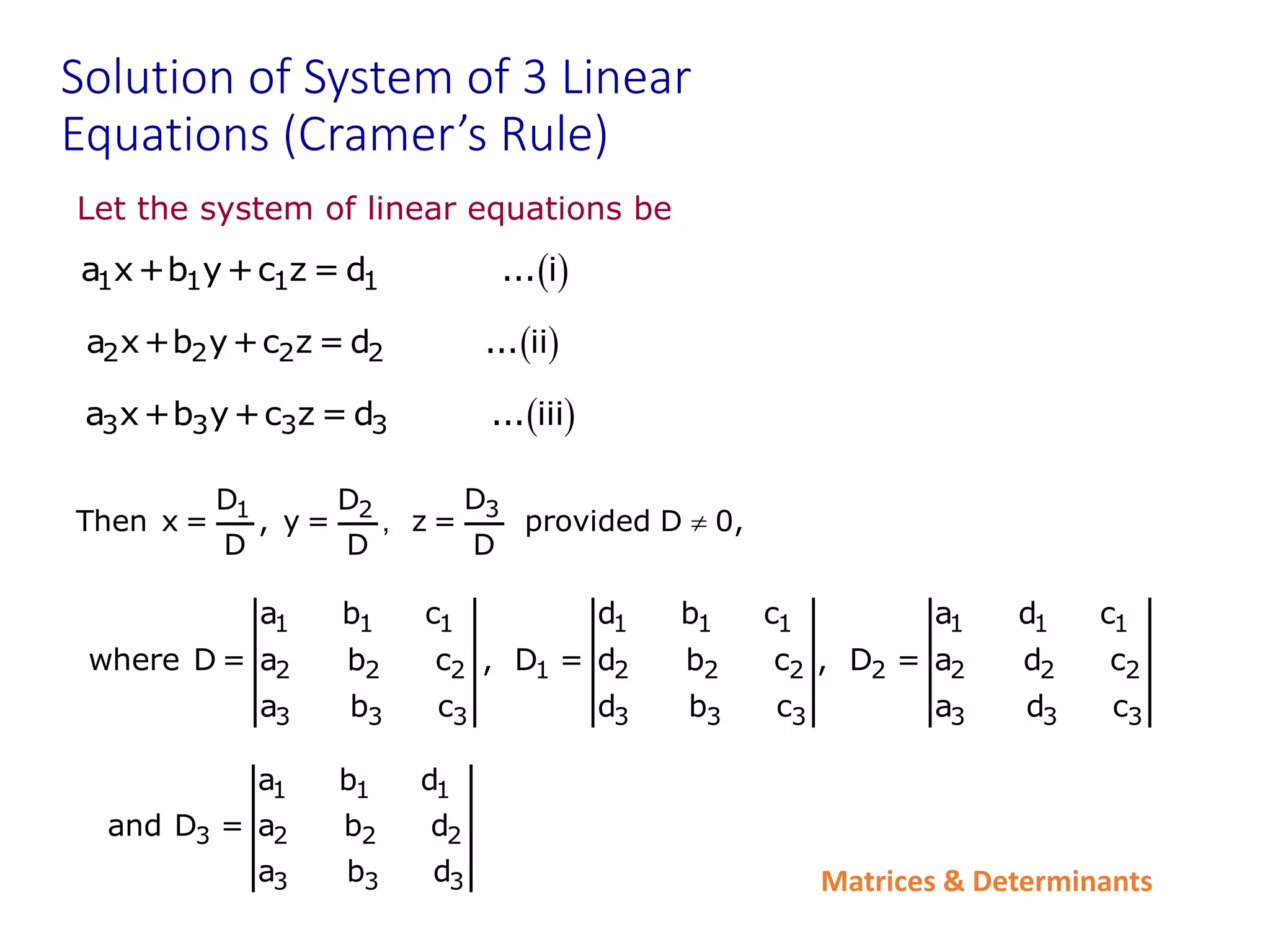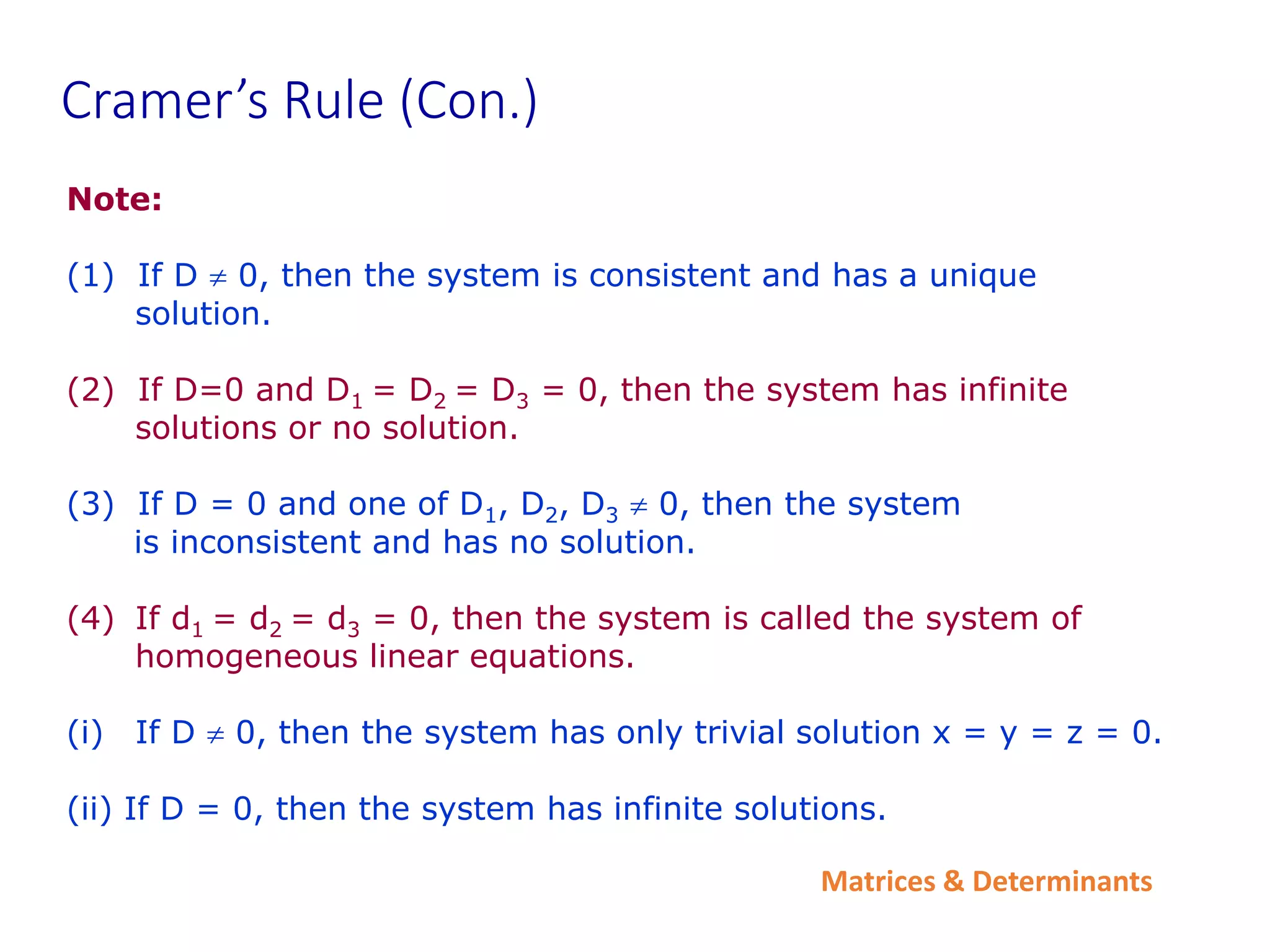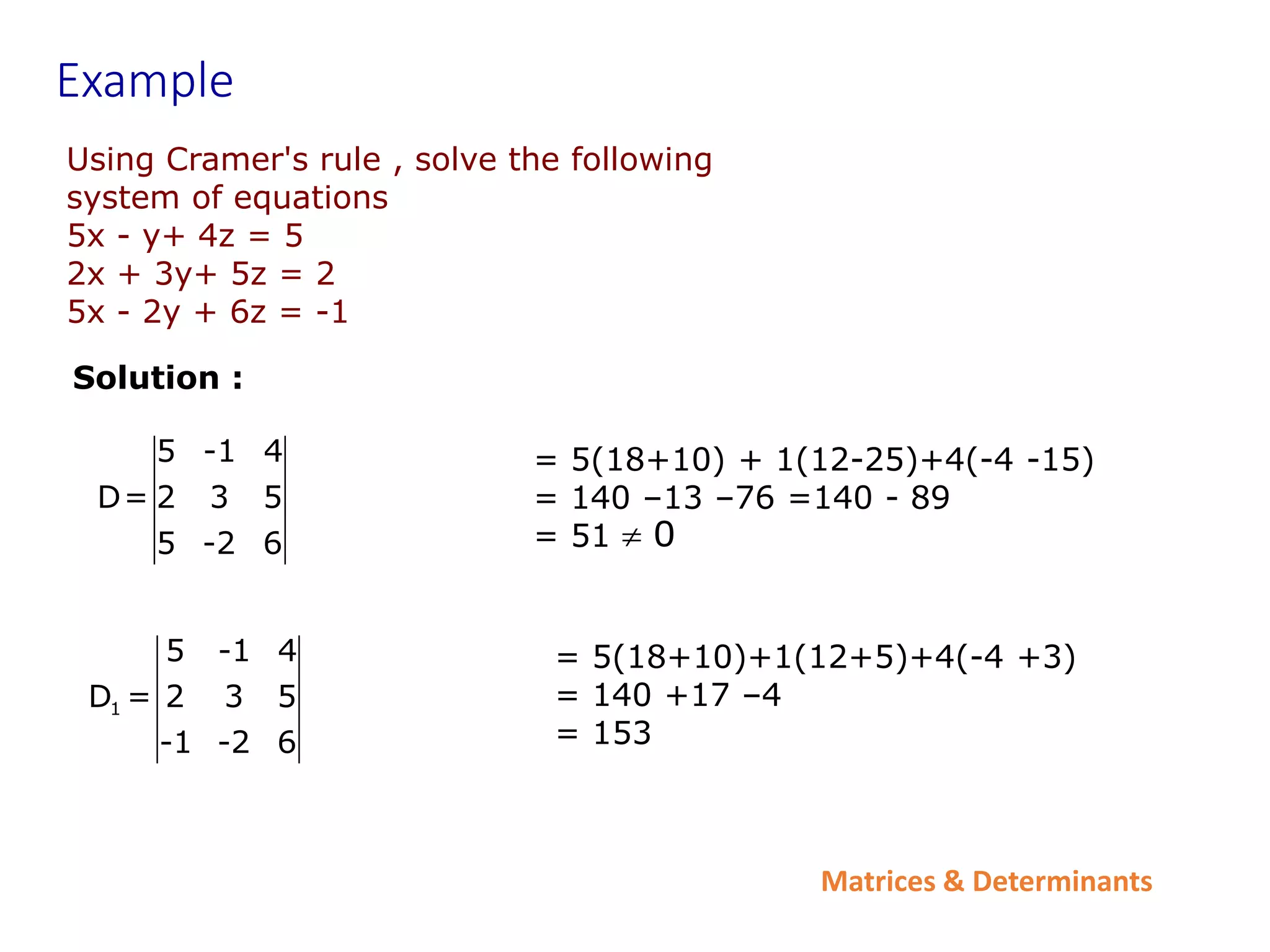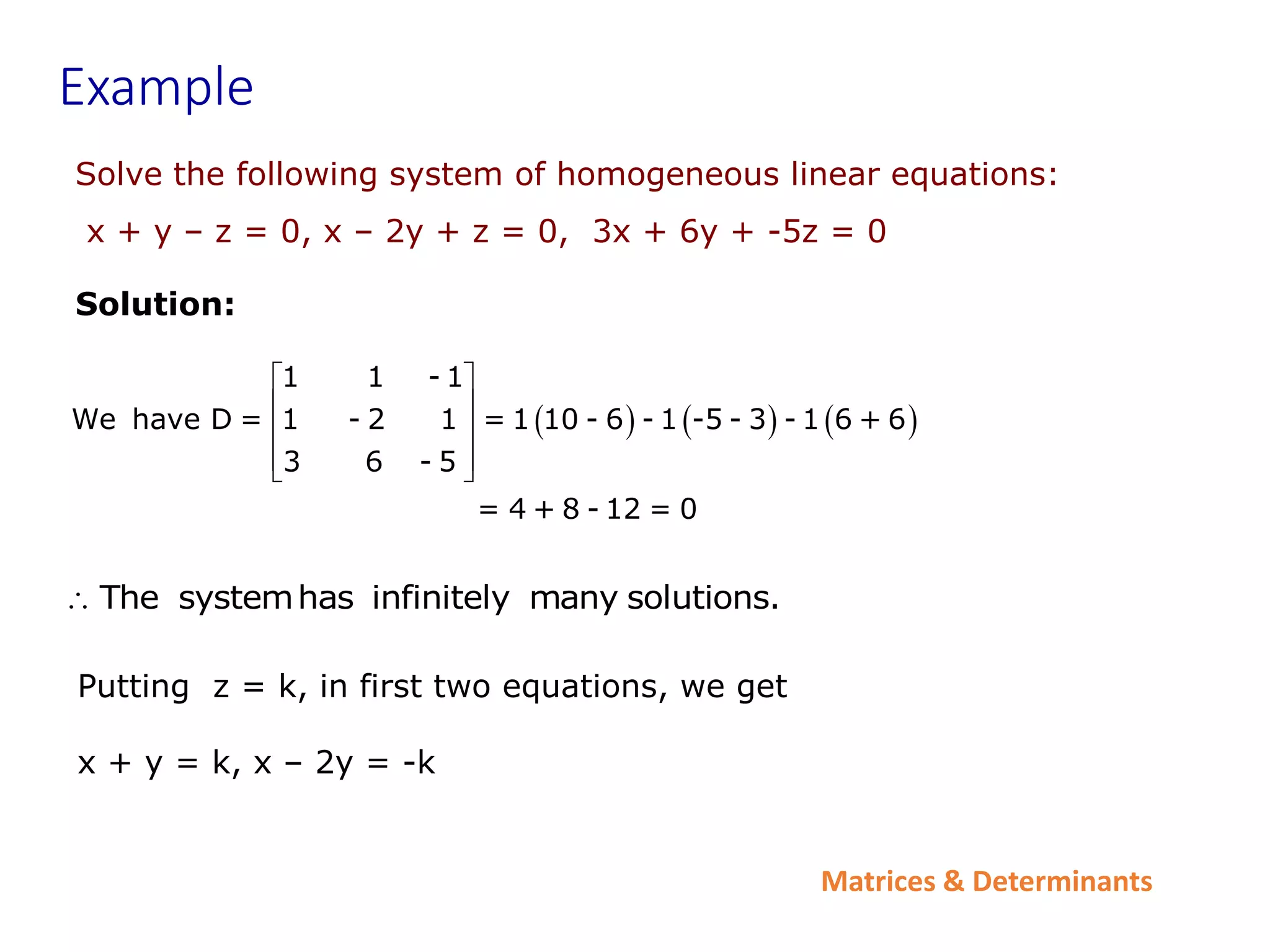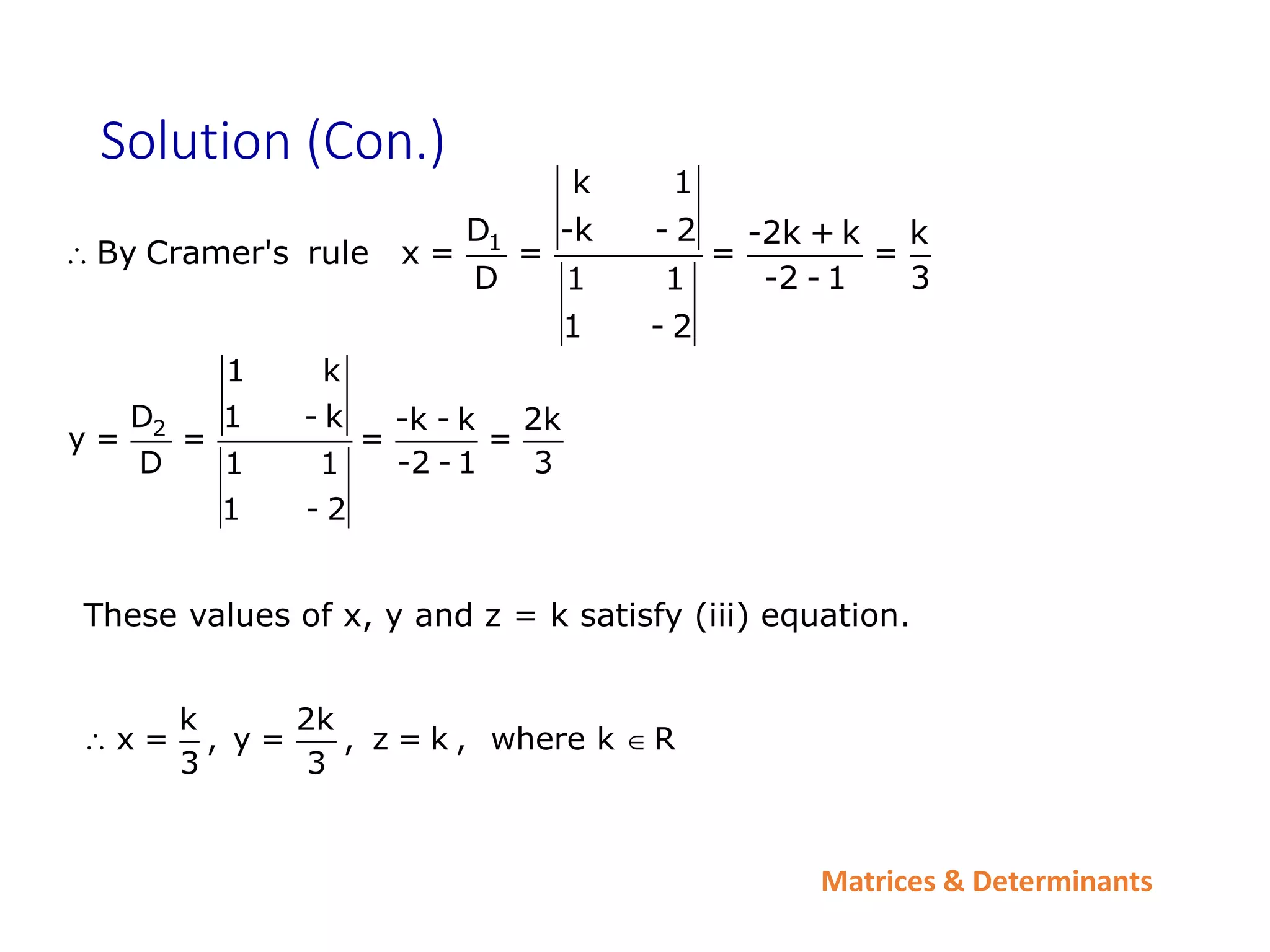1. The document discusses matrices and determinants. It defines different types of matrices such as rectangular, square, diagonal, scalar, row, column, identity, zero, upper triangular, and lower triangular matrices.
2. It explains how to calculate determinants of matrices. The determinant of a 1x1 matrix is the single element. The determinant of a 2x2 matrix is calculated using a formula. Determinants of higher order matrices are calculated by expanding along rows or columns.
3. It introduces concepts of minors, cofactors, and explains how the value of a determinant can be written in terms of its minors and cofactors. It also lists some properties and operations for determinants.

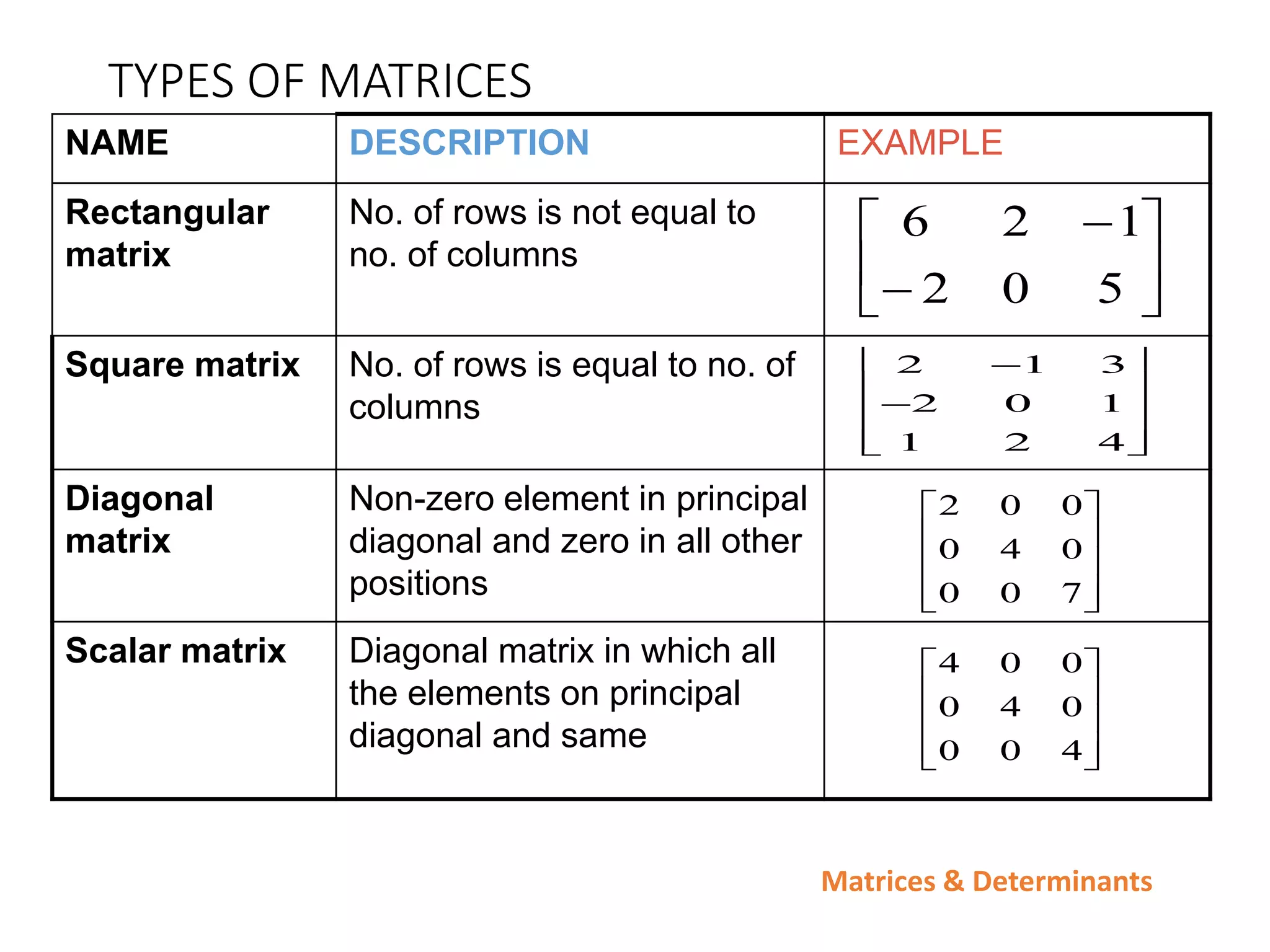
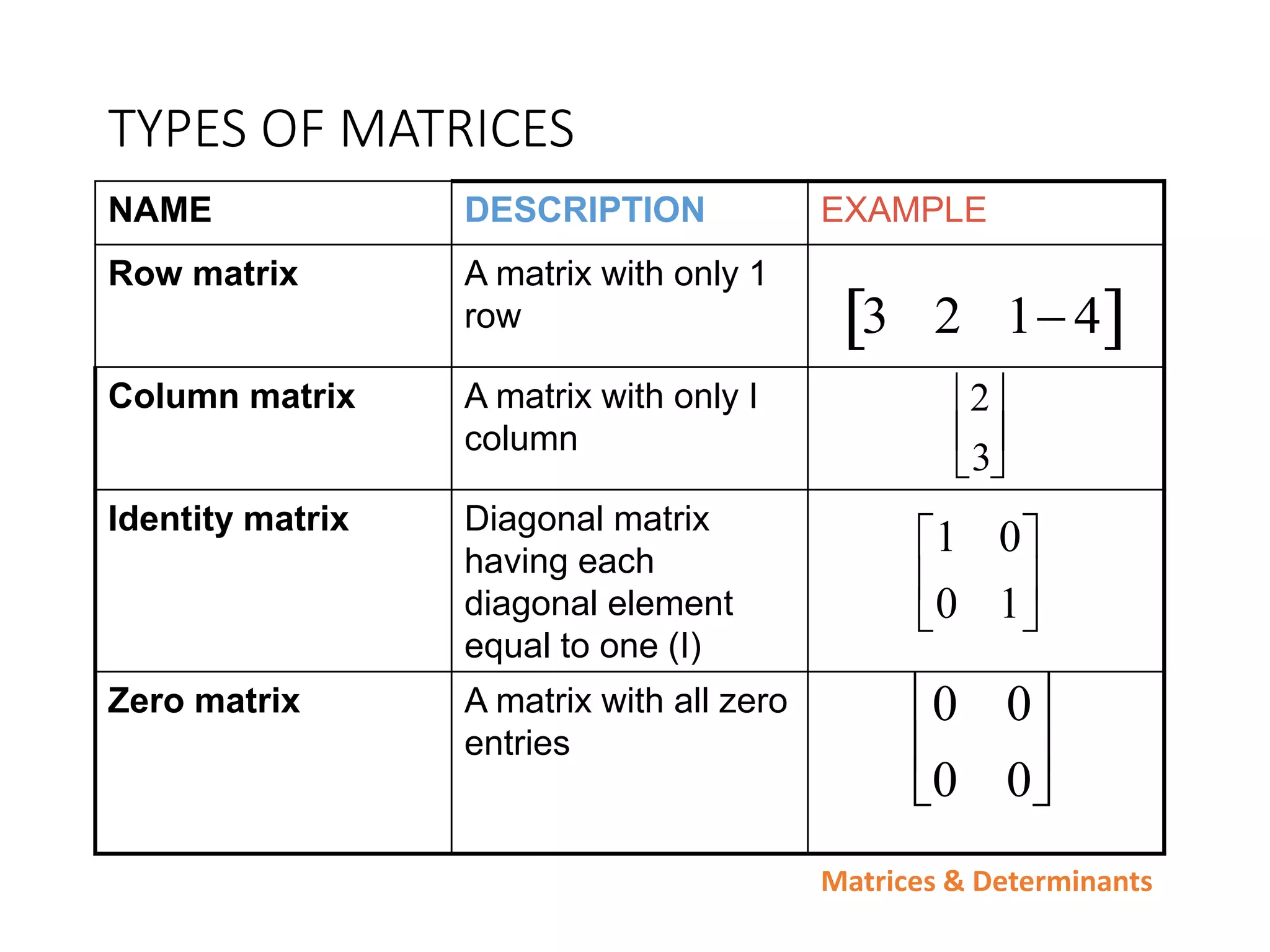

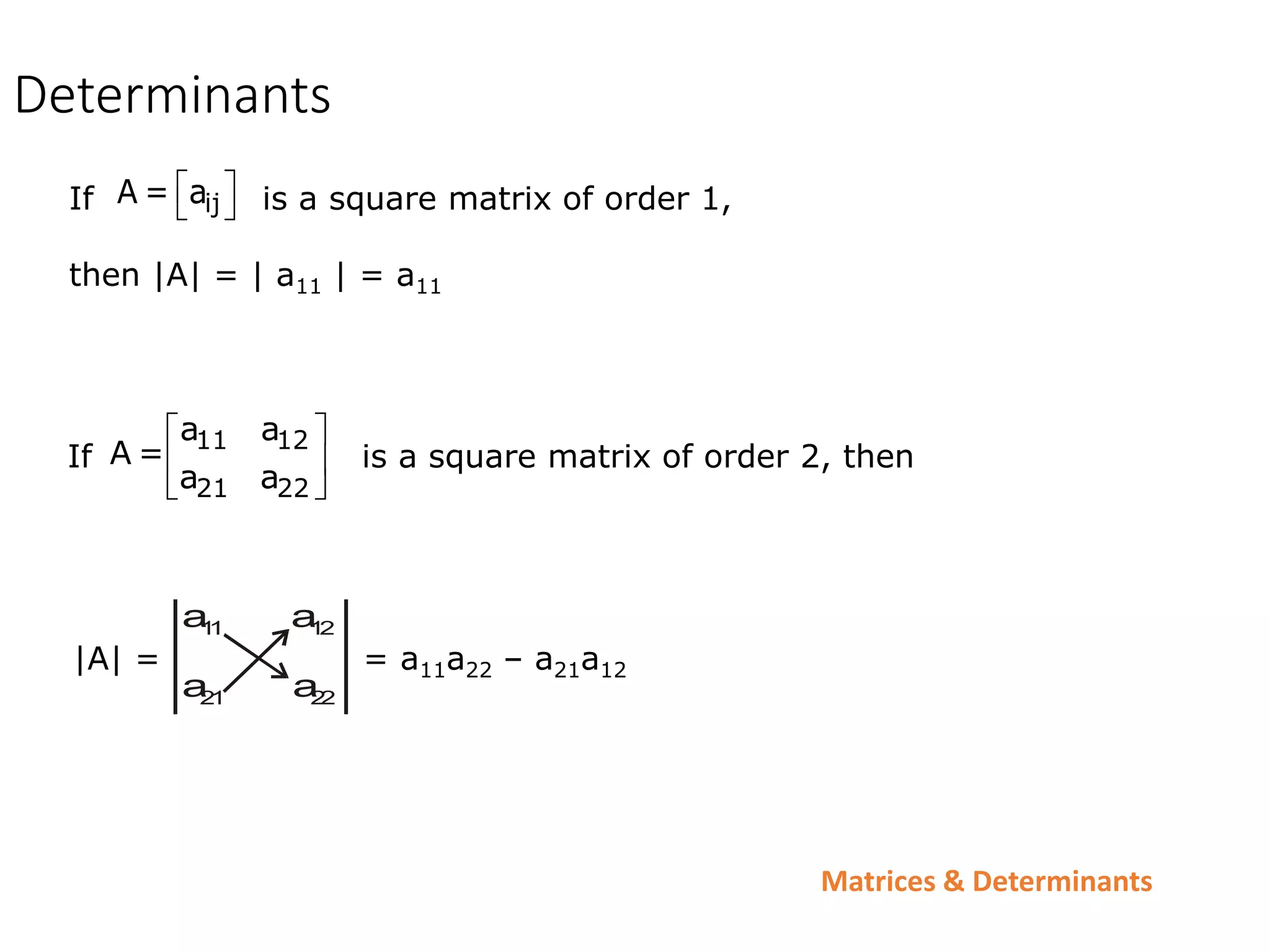
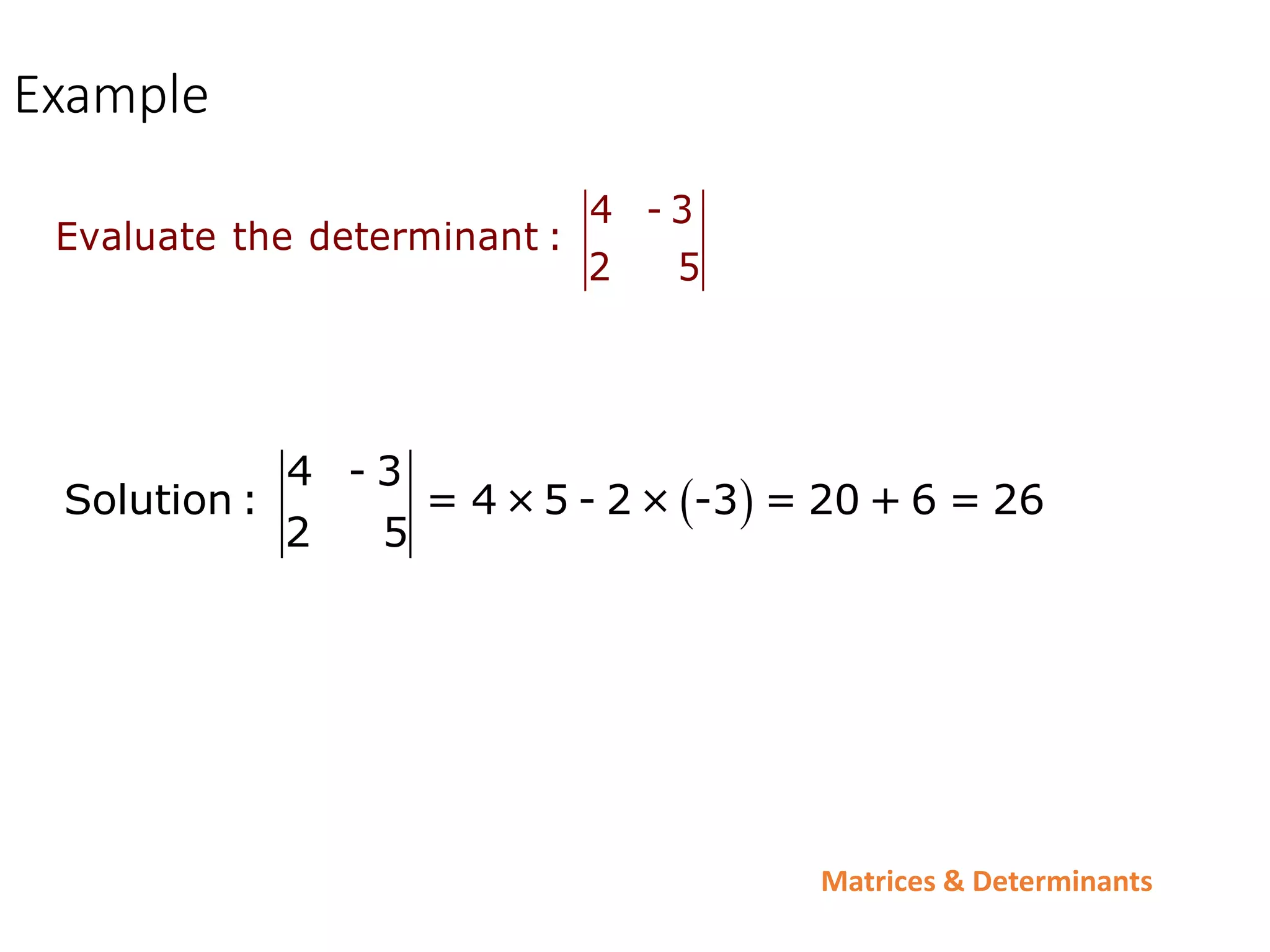
![Matrices & Determinants
Solution
If A = is a square matrix of order 3, then
11 12 13
21 22 23
31 32 33
a a a
a a a
a a a
[Expanding along first row]
11 12 13
22 23 21 23 21 22
21 22 23 11 12 13
32 33 31 33 31 32
31 32 33
a a a
a a a a a a
| A |= a a a = a - a + a
a a a a a a
a a a
11 22 33 32 23 12 21 33 31 23 13 21 32 31 22
= a a a - a a - a a a - a a + a a a - a a
11 22 33 12 31 23 13 21 32 11 23 32 12 21 33 13 31 22
a a a a a a a a a a a a a a a a a a
](https://image.slidesharecdn.com/introductionofdeterminant-210609085550/75/Introduction-of-determinant-7-2048.jpg)
![Matrices & Determinants
Example
2 3 - 5
Evaluate the determinant : 7 1 - 2
-3 4 1
2 3 - 5
1 - 2 7 - 2 7 1
7 1 - 2 = 2 - 3 + -5
4 1 -3 1 -3 4
-3 4 1
= 2 1+ 8 - 3 7 - 6 - 5 28 + 3
= 18 - 3 - 155
= -140
[Expanding along first row]
Solution :](https://image.slidesharecdn.com/introductionofdeterminant-210609085550/75/Introduction-of-determinant-8-2048.jpg)
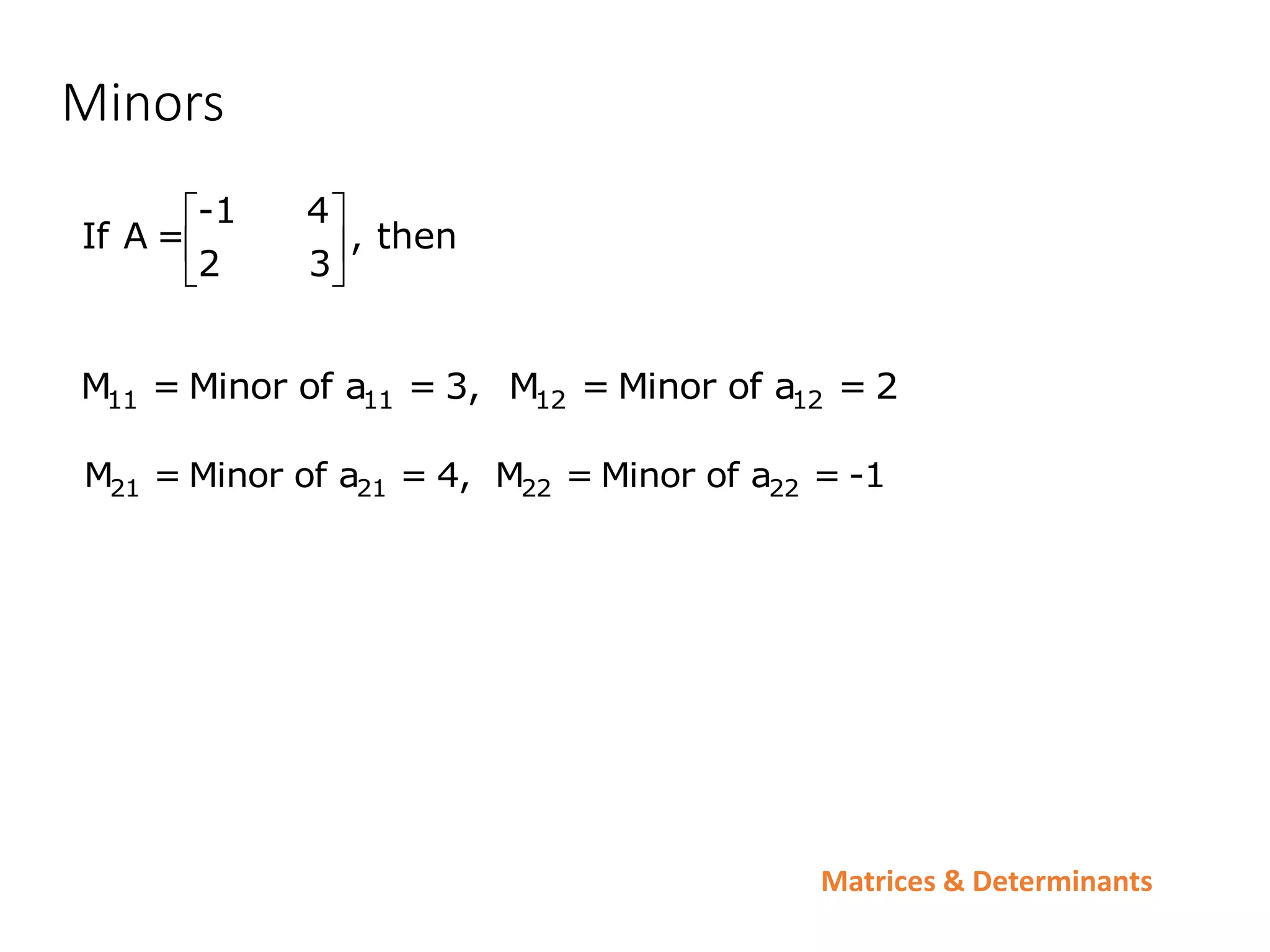
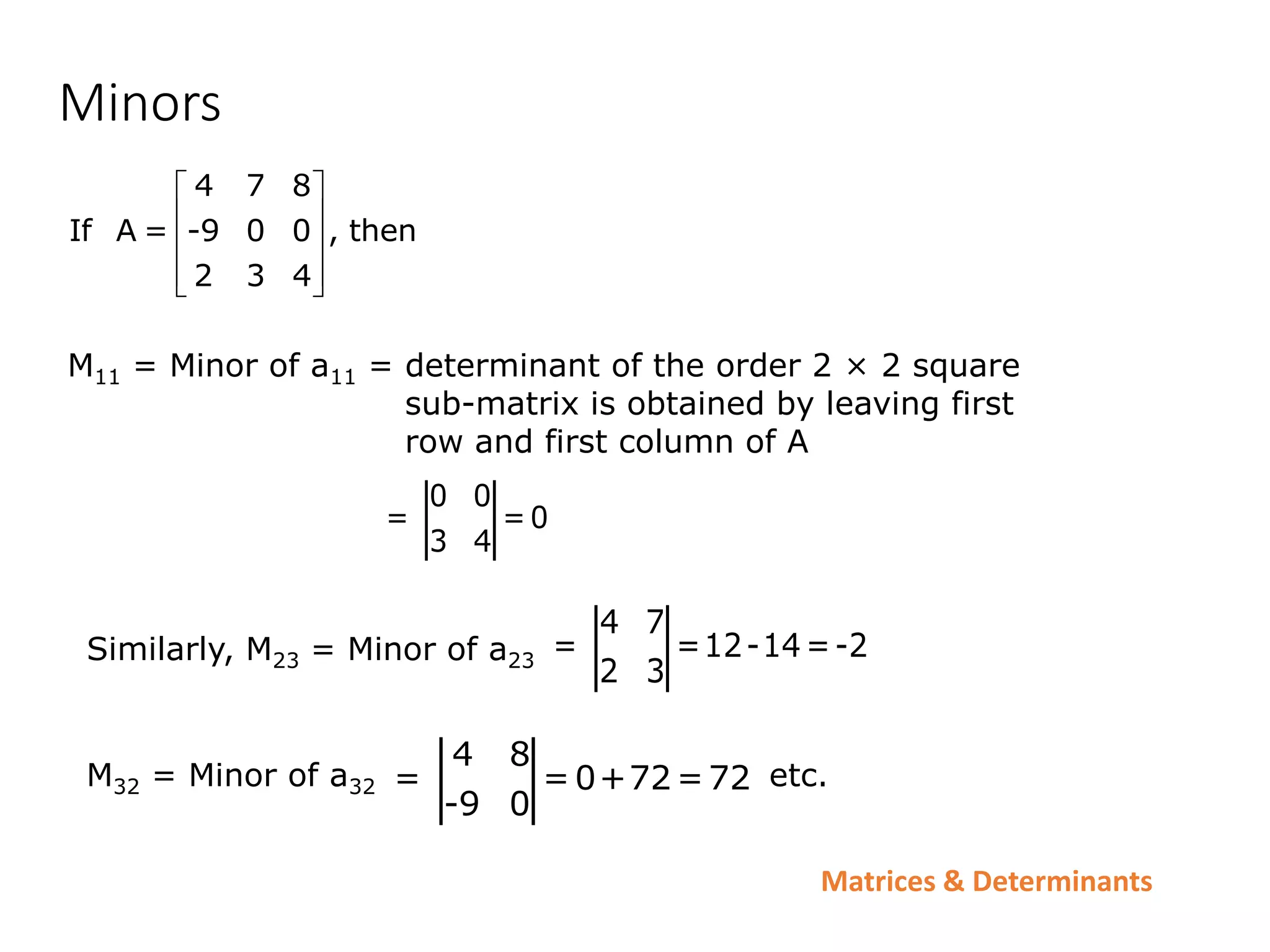

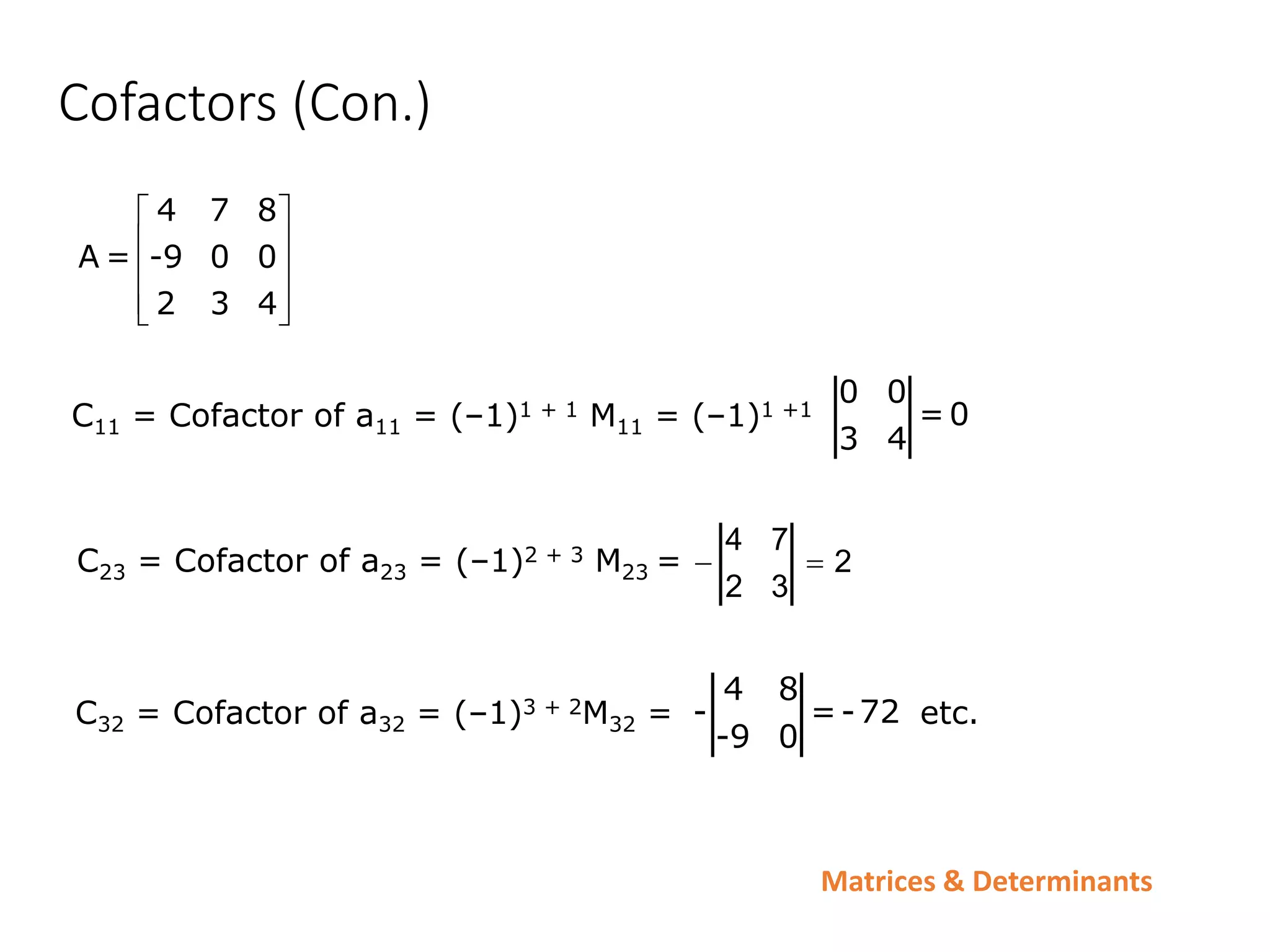

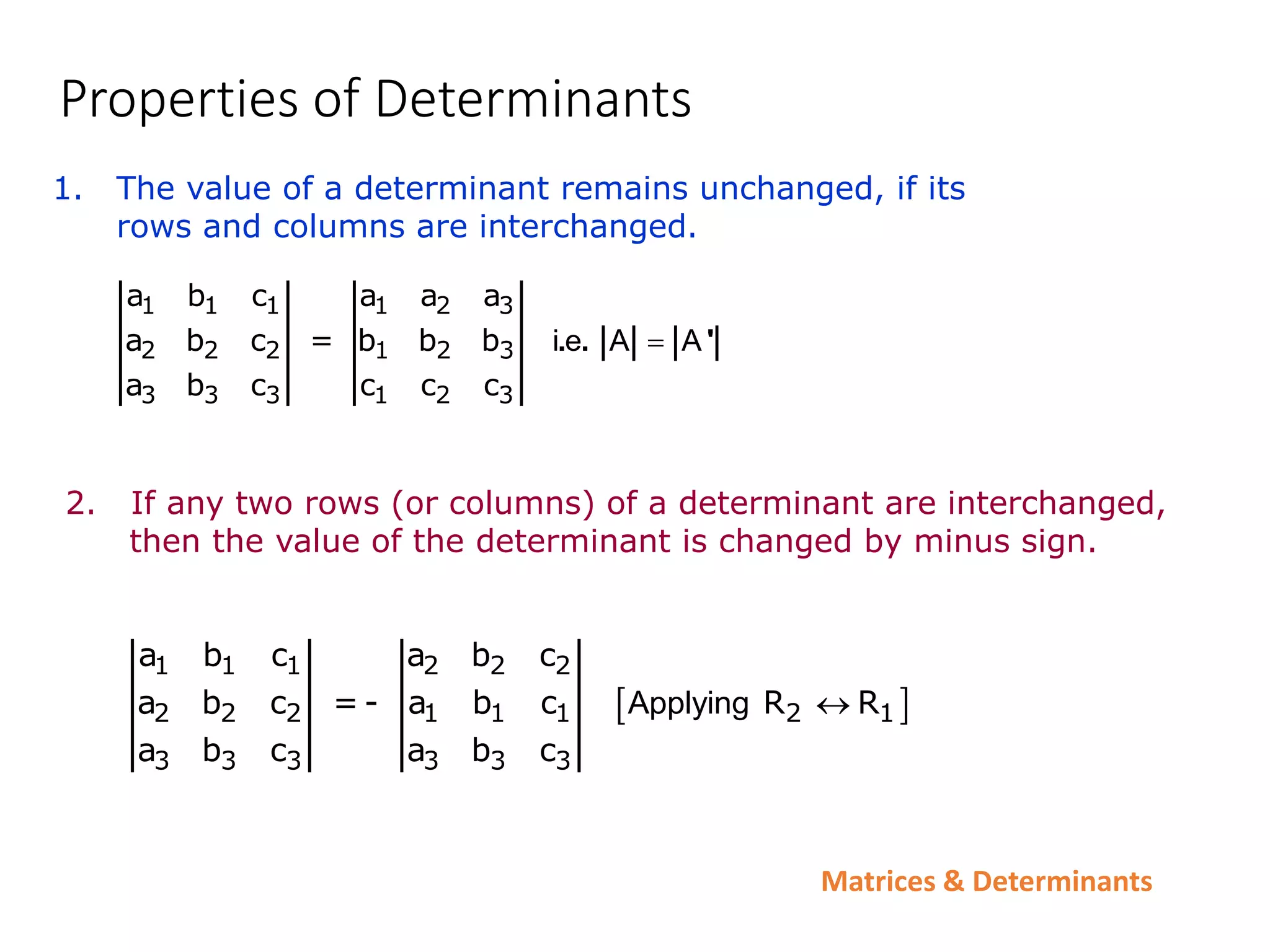
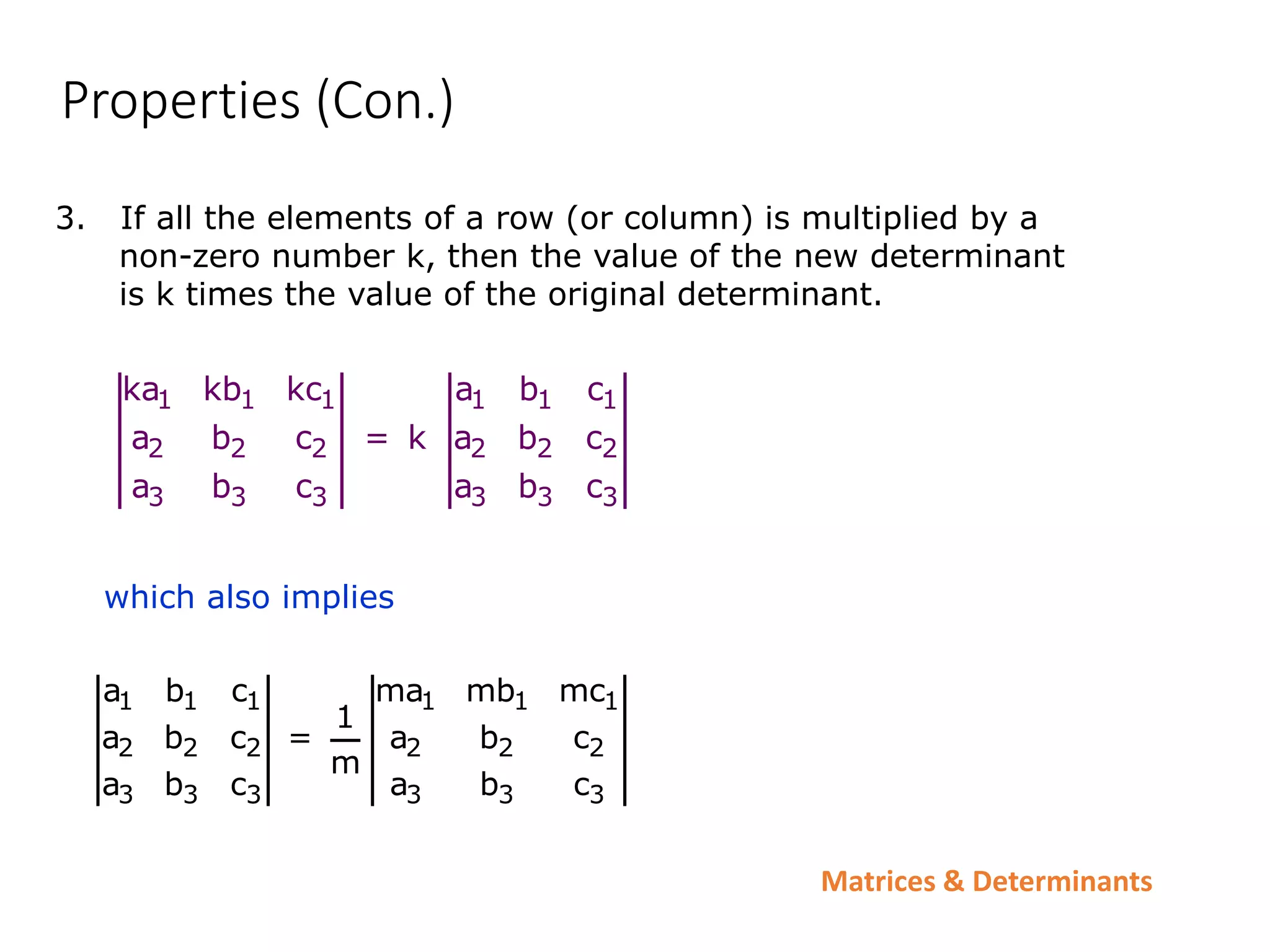
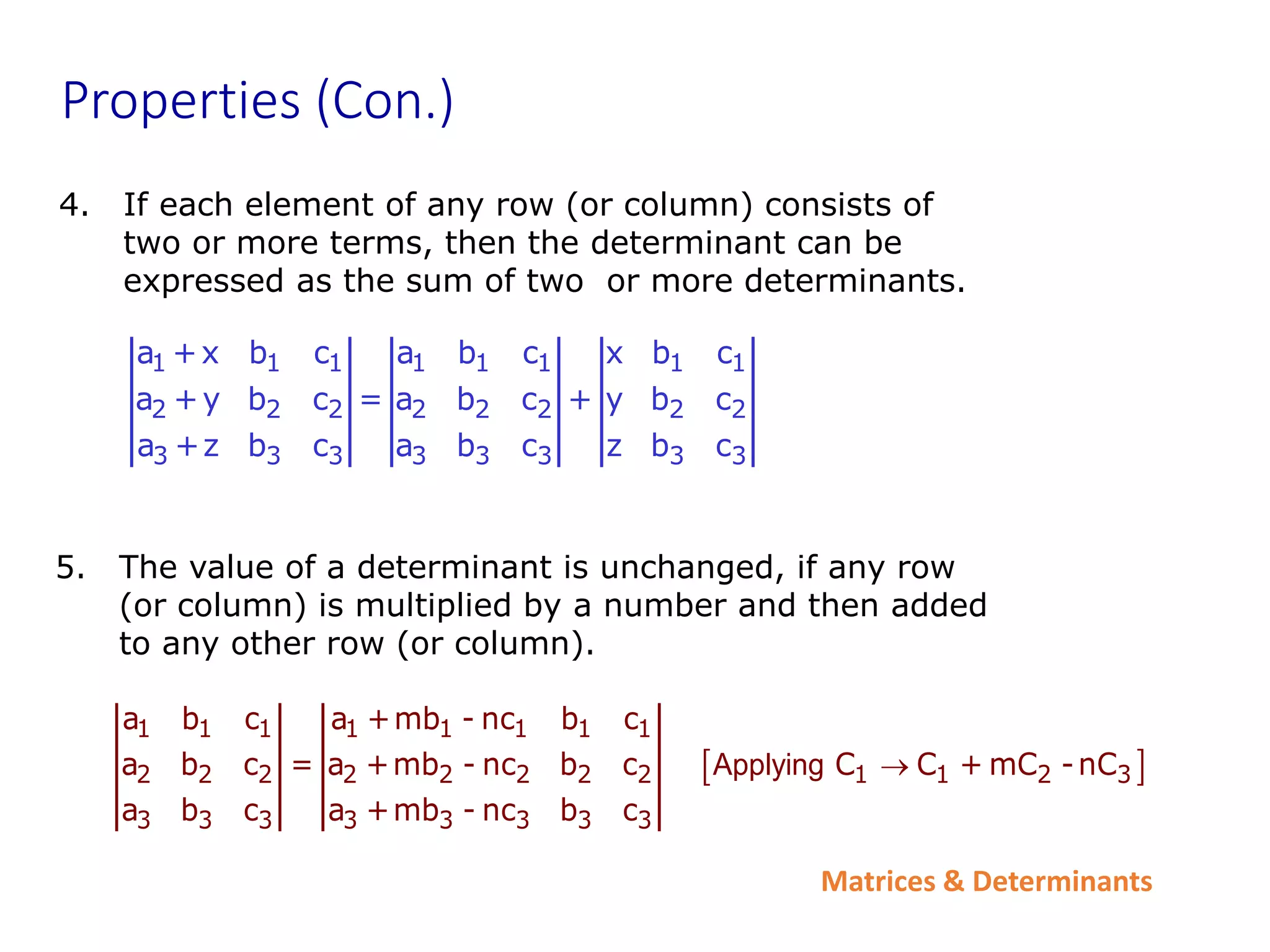
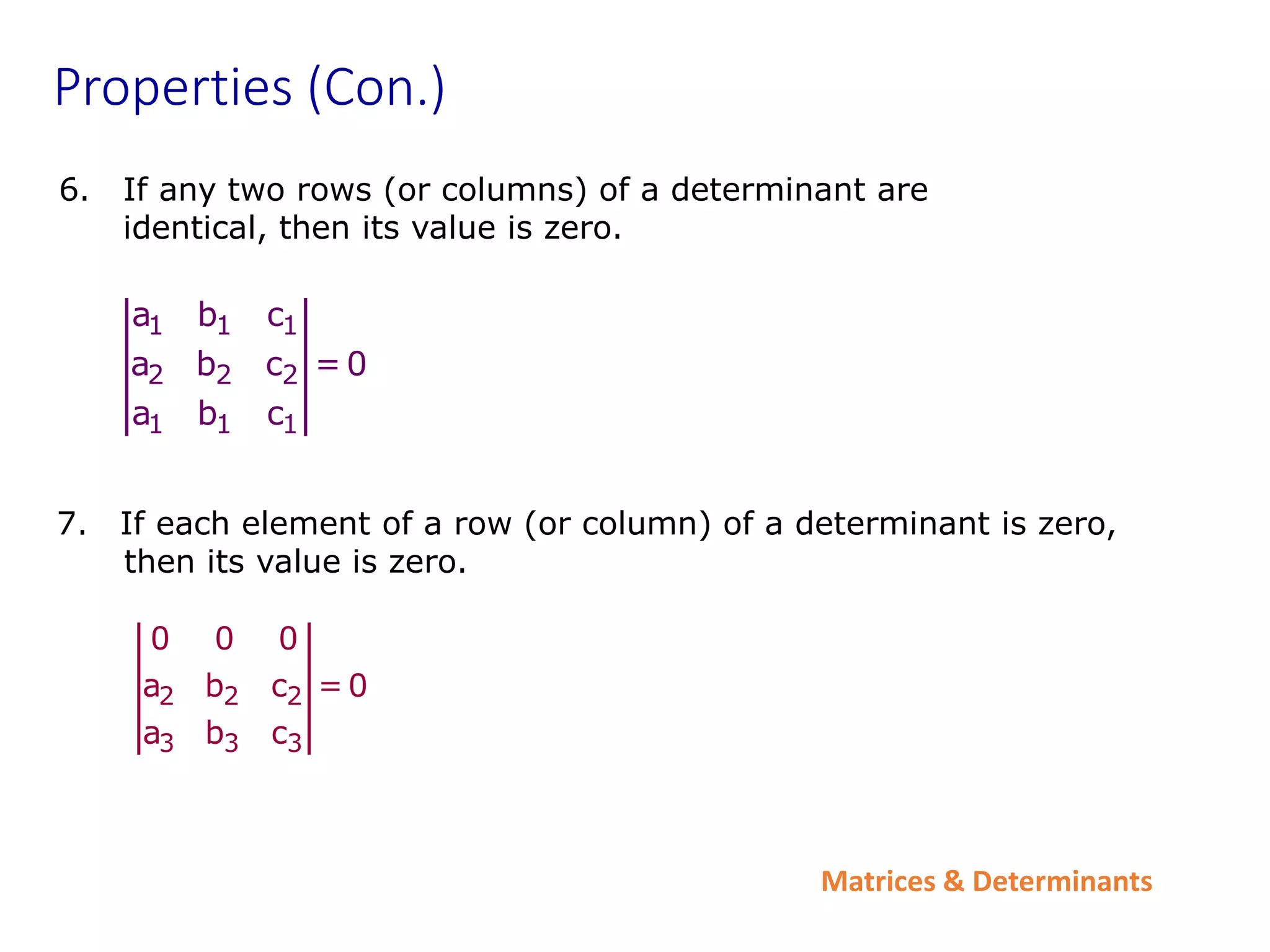
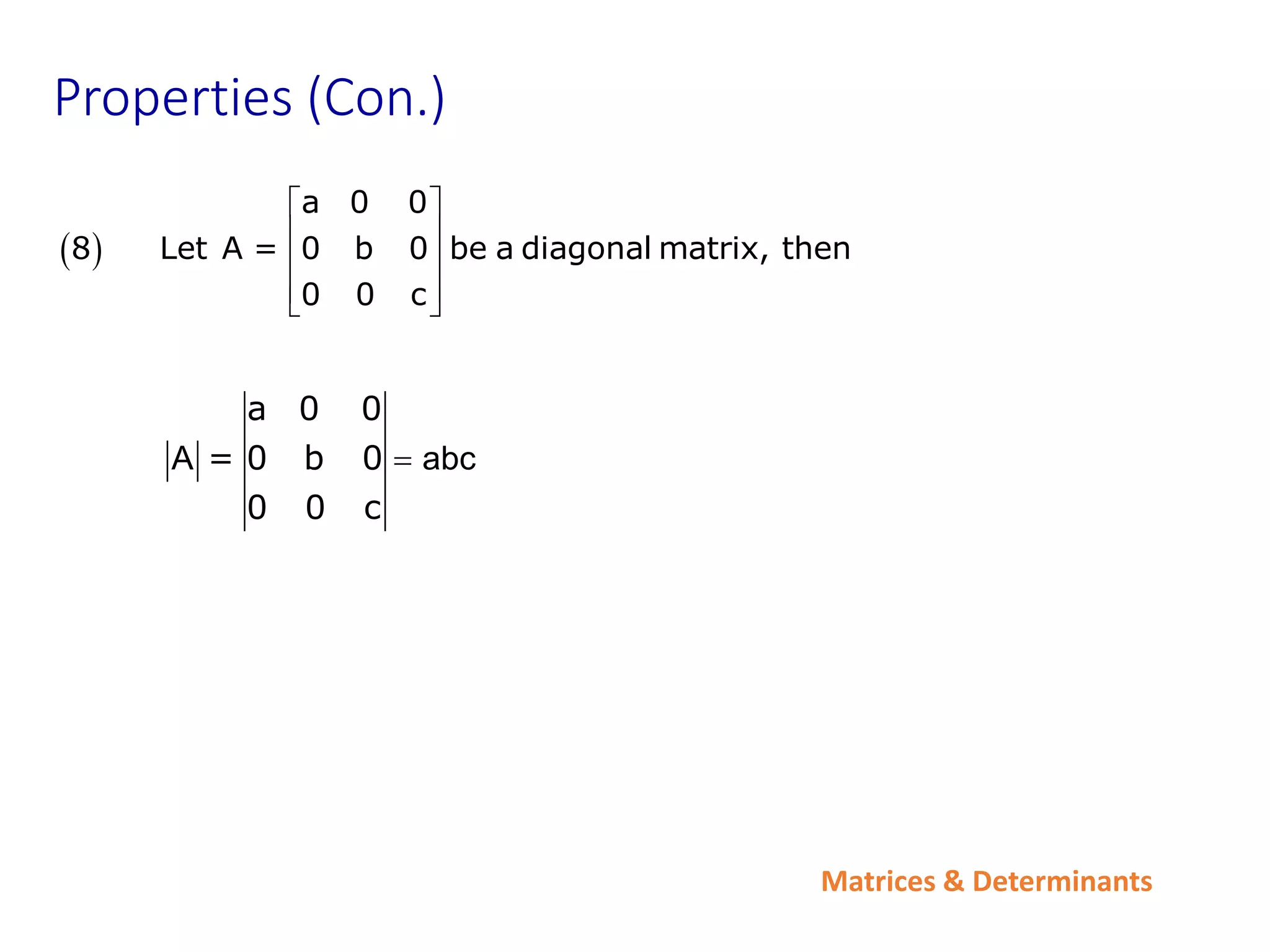
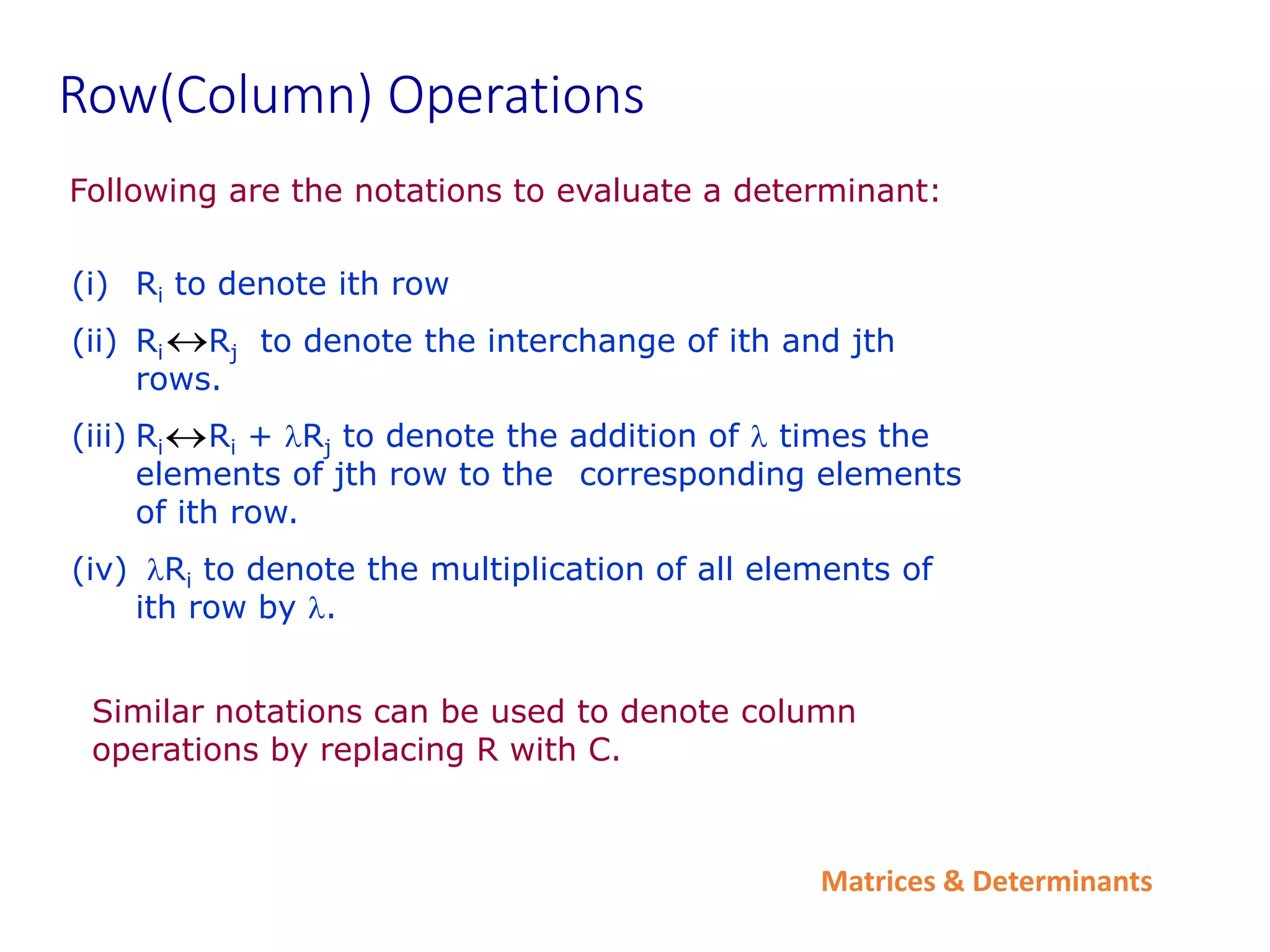
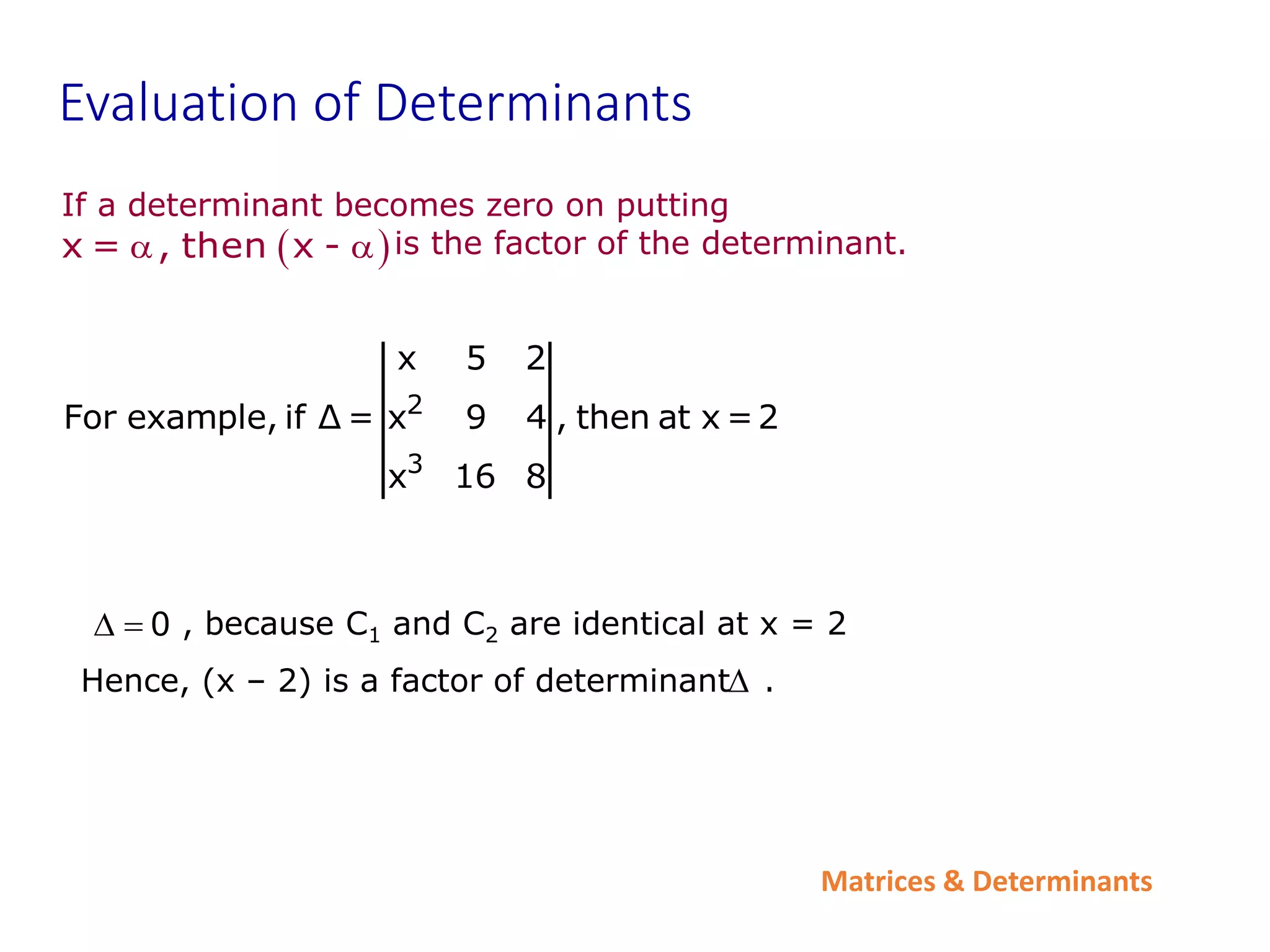
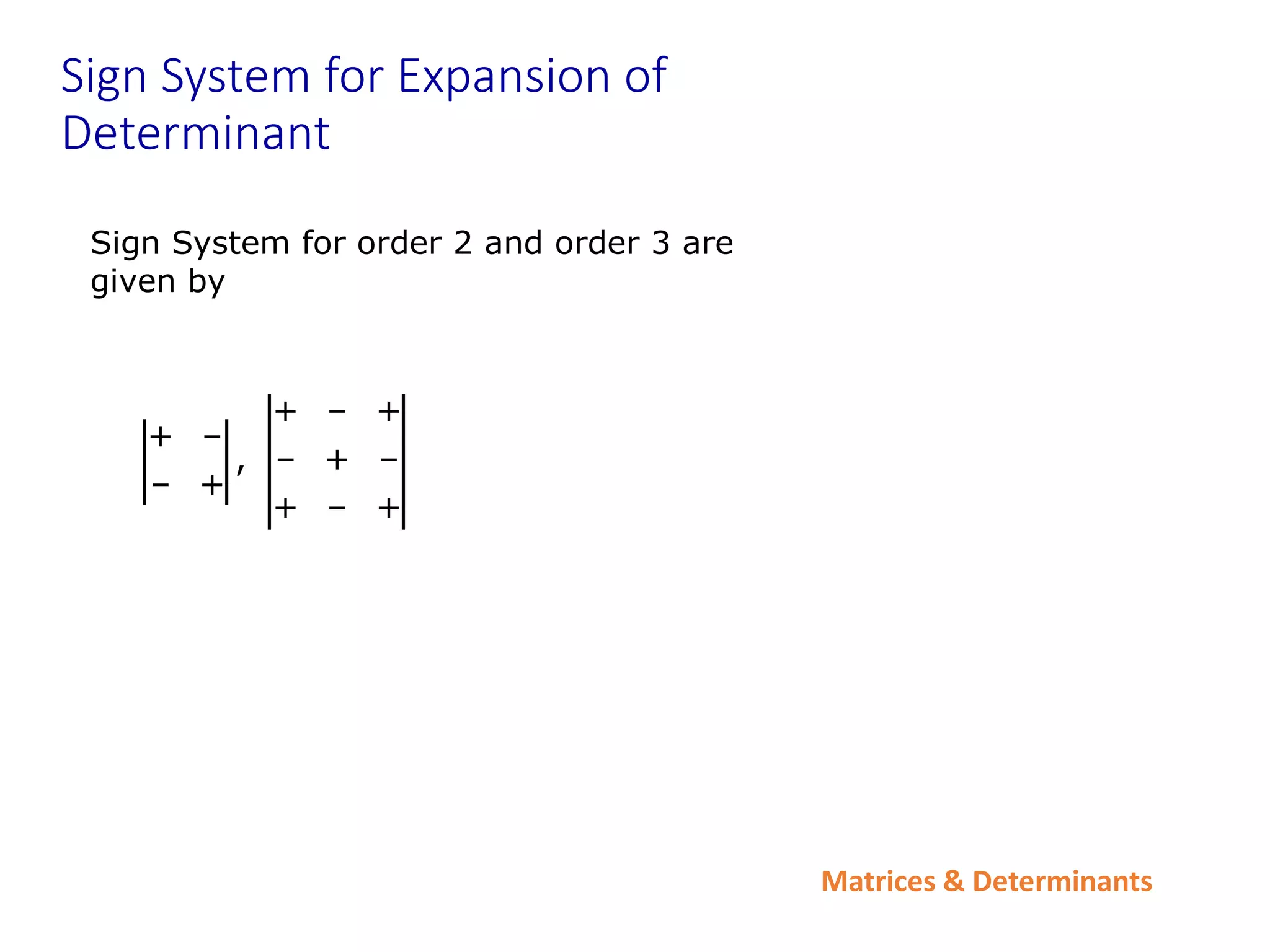
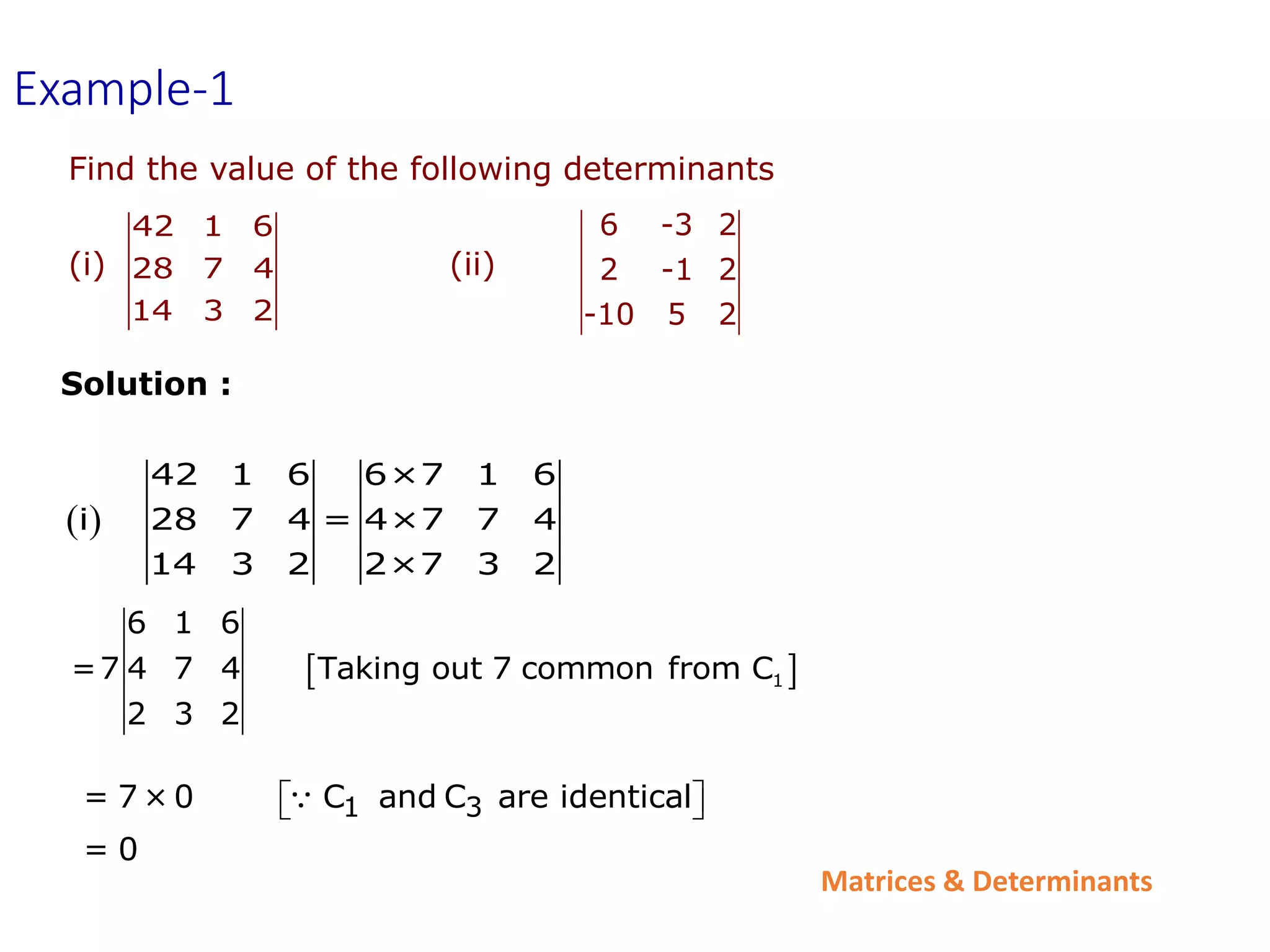

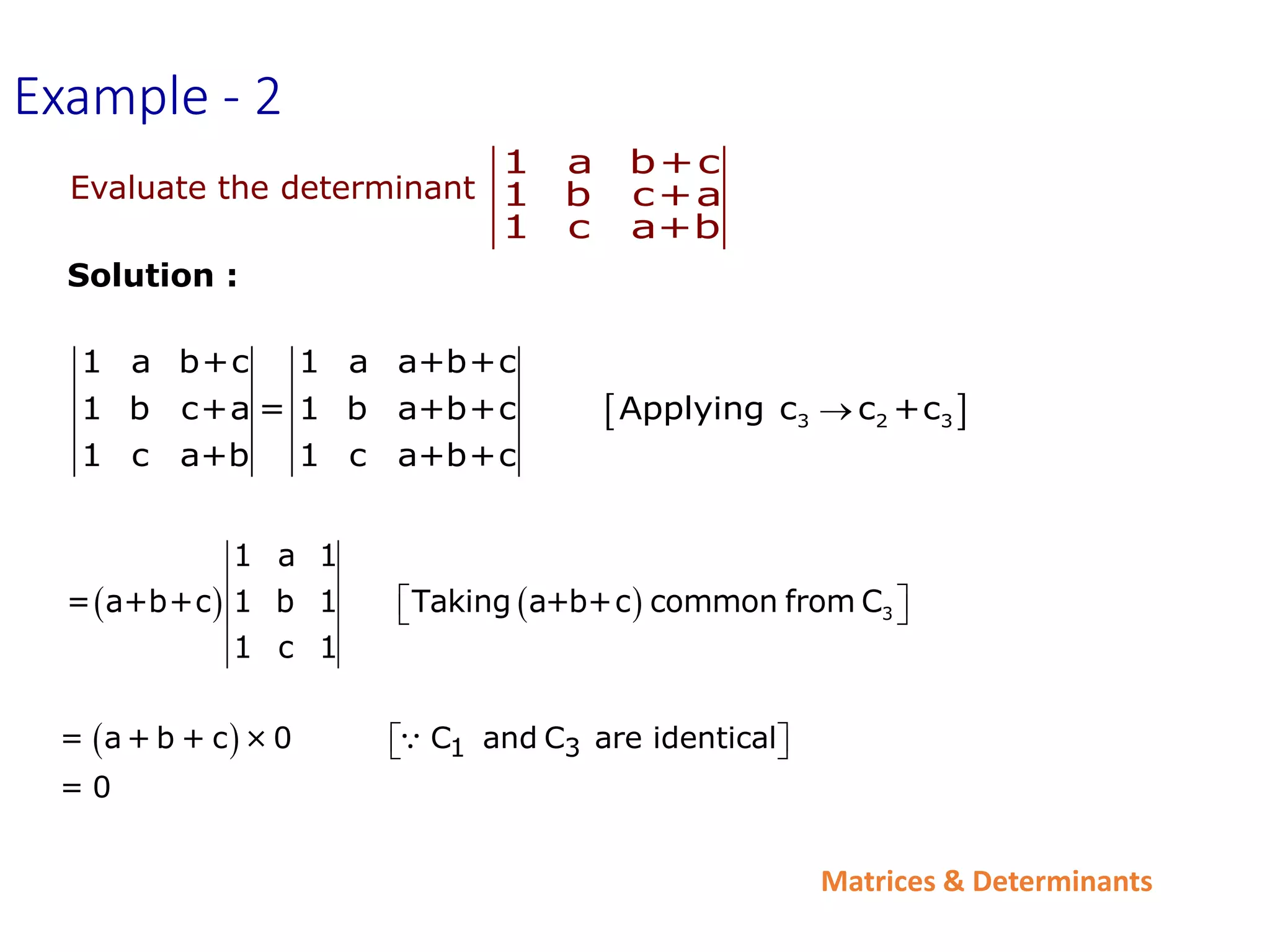
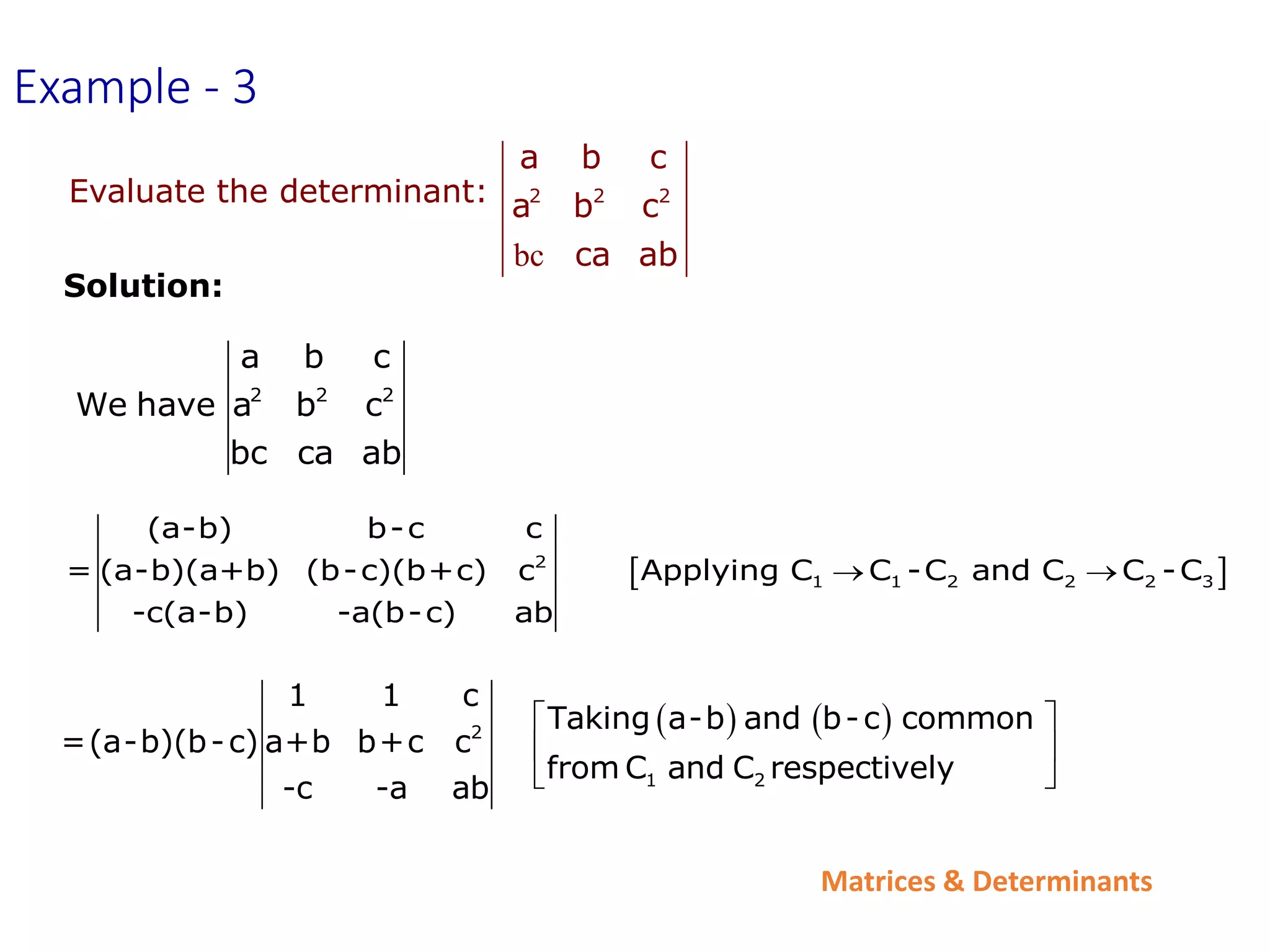
![Matrices & Determinants
2
1 1 2
0 1 c
=(a-b)(b-c) -(c-a) b+c c Applying c c -c
-(c-a) -a ab
2
0 1 c
=-(a-b)(b-c)(c-a) 1 b+c c
1 -a ab
2
2 2 3
0 1 c
= -(a-b)(b-c)(c-a) 0 a+b+c c -ab Applying R R -R
1 -a ab
Now expanding along C1 , we get
(a-b) (b-c) (c-a) [- (c2 – ab – ac – bc – c2)]
= (a-b) (b-c) (c-a) (ab + bc + ac)
Solution Cont.](https://image.slidesharecdn.com/introductionofdeterminant-210609085550/75/Introduction-of-determinant-26-2048.jpg)
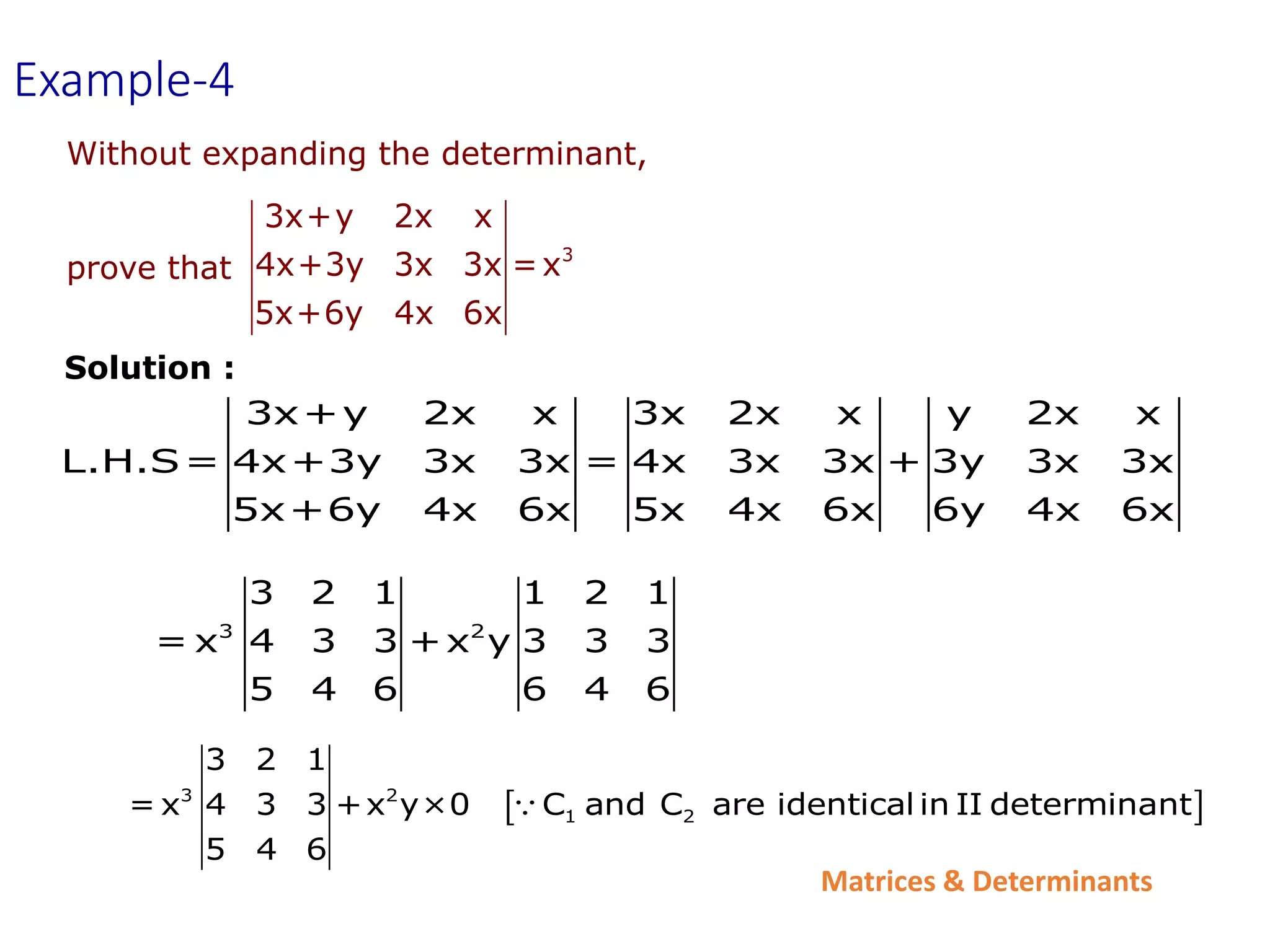
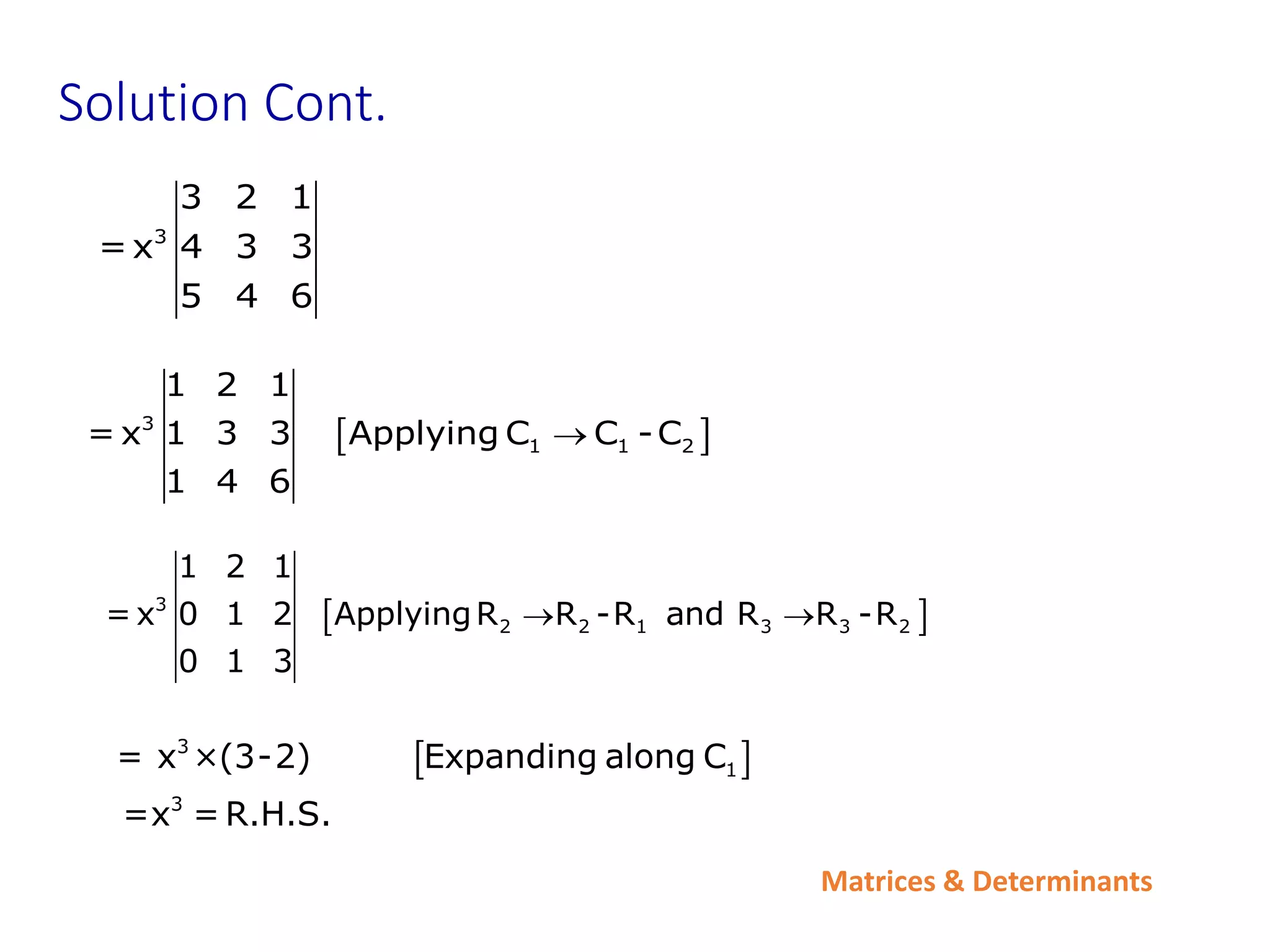
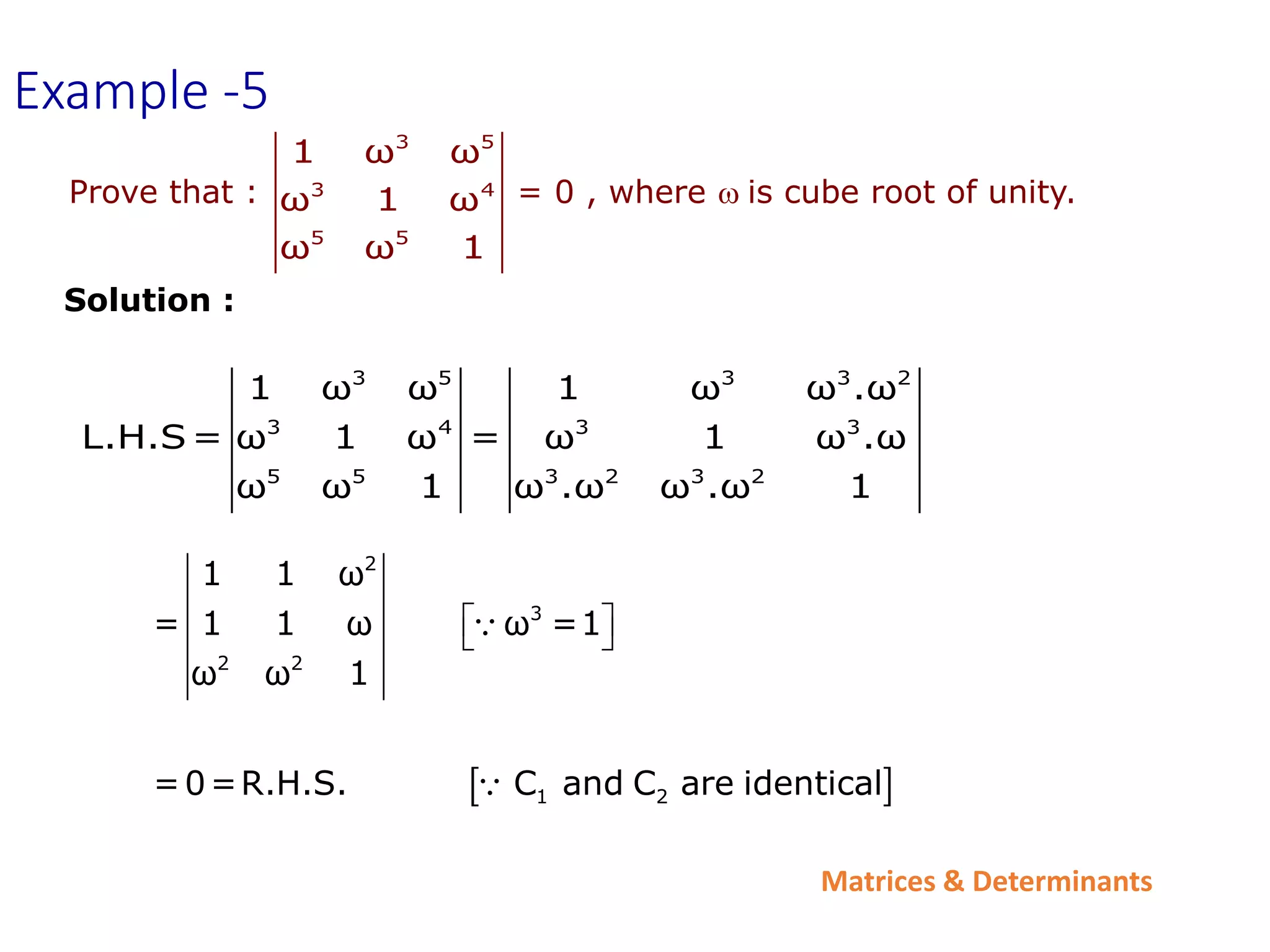
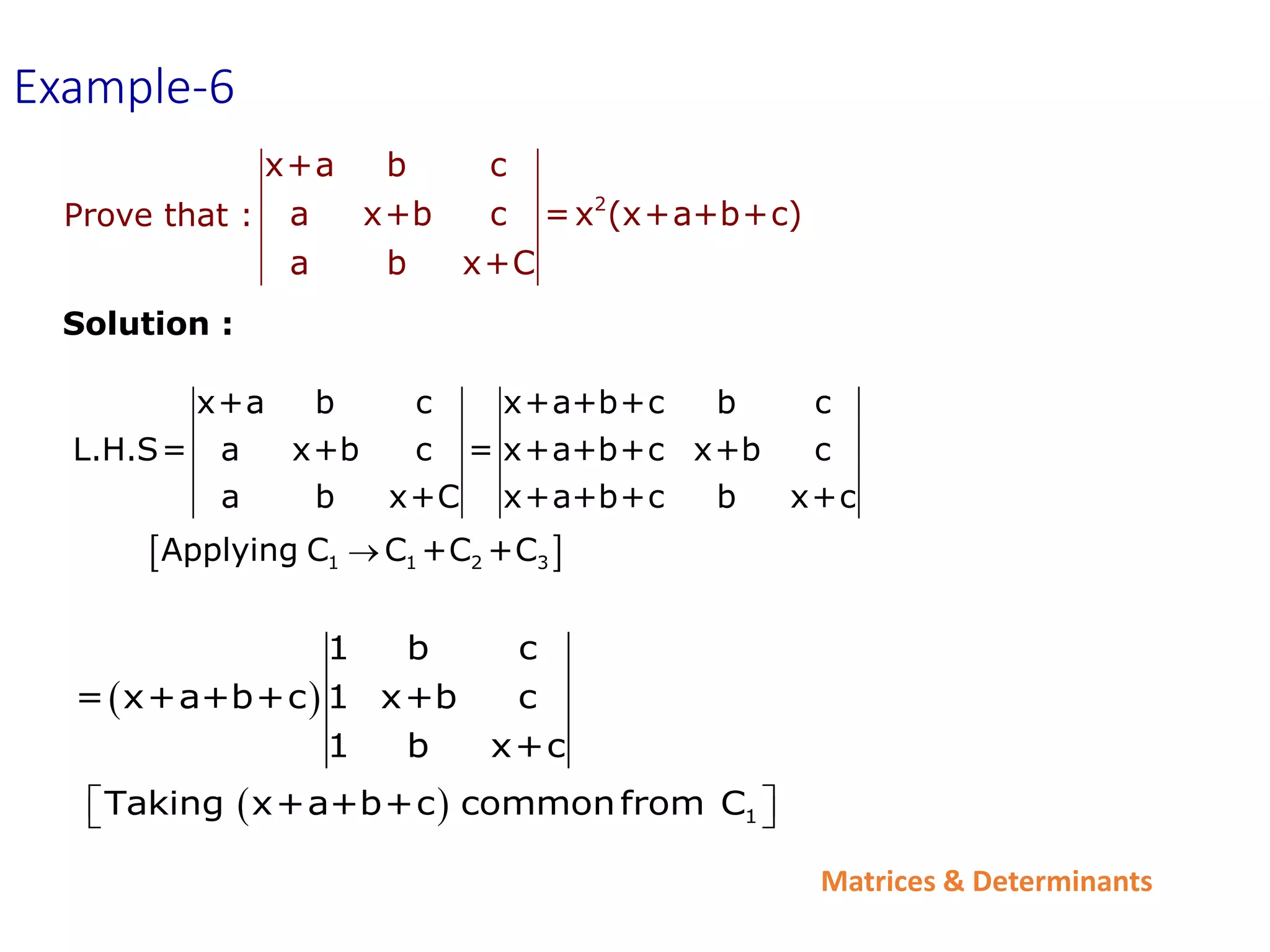
![Matrices & Determinants
Solution cont.
2 2 1 3 3 1
1 b c
=(x+a+b+c) 0 x 0
0 0 x
Applying R R -R and R R -R
Expanding along C1 , we get
(x + a + b + c) [1(x2)] = x2 (x + a + b + c)
= R.H.S](https://image.slidesharecdn.com/introductionofdeterminant-210609085550/75/Introduction-of-determinant-31-2048.jpg)

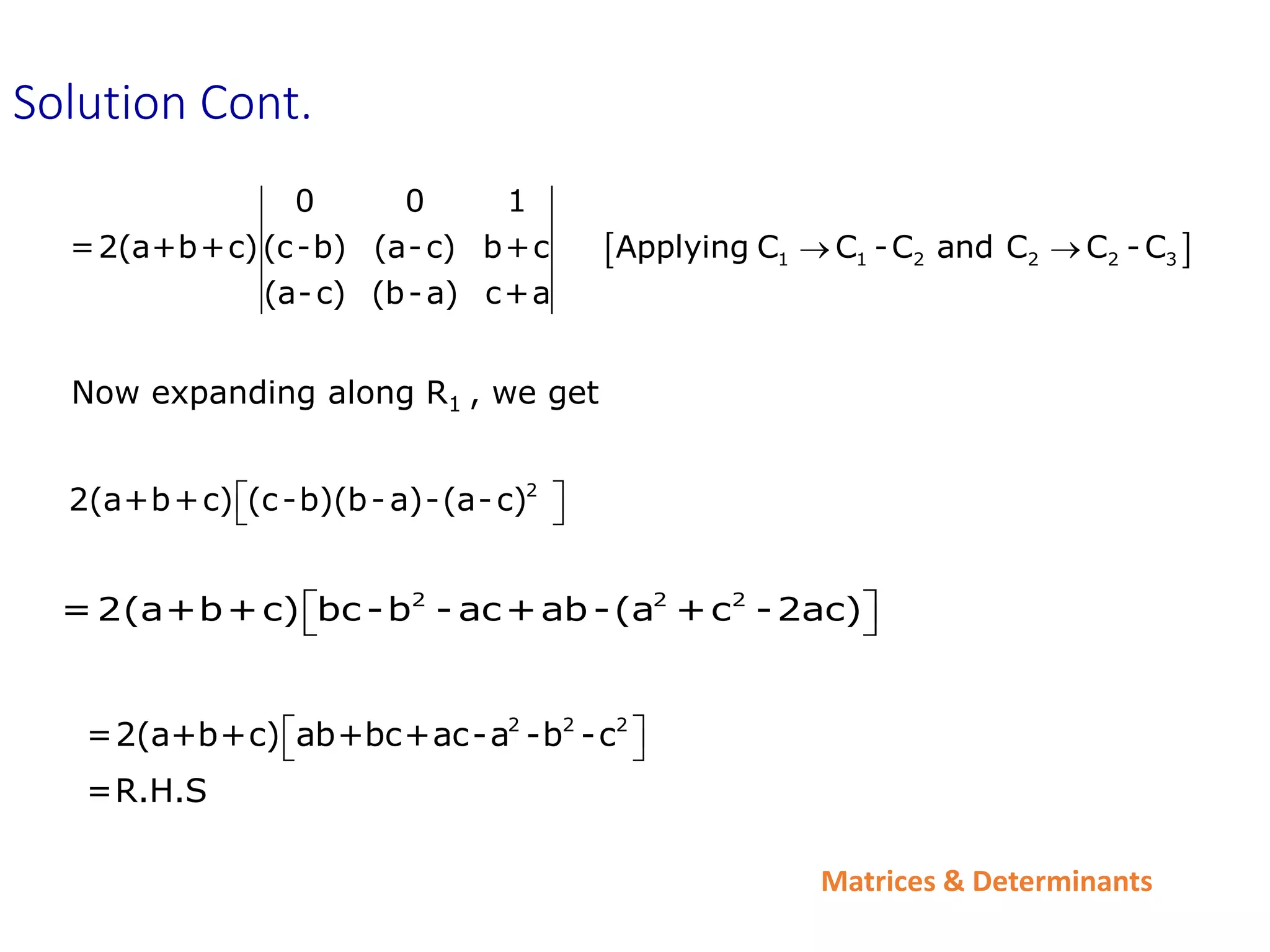
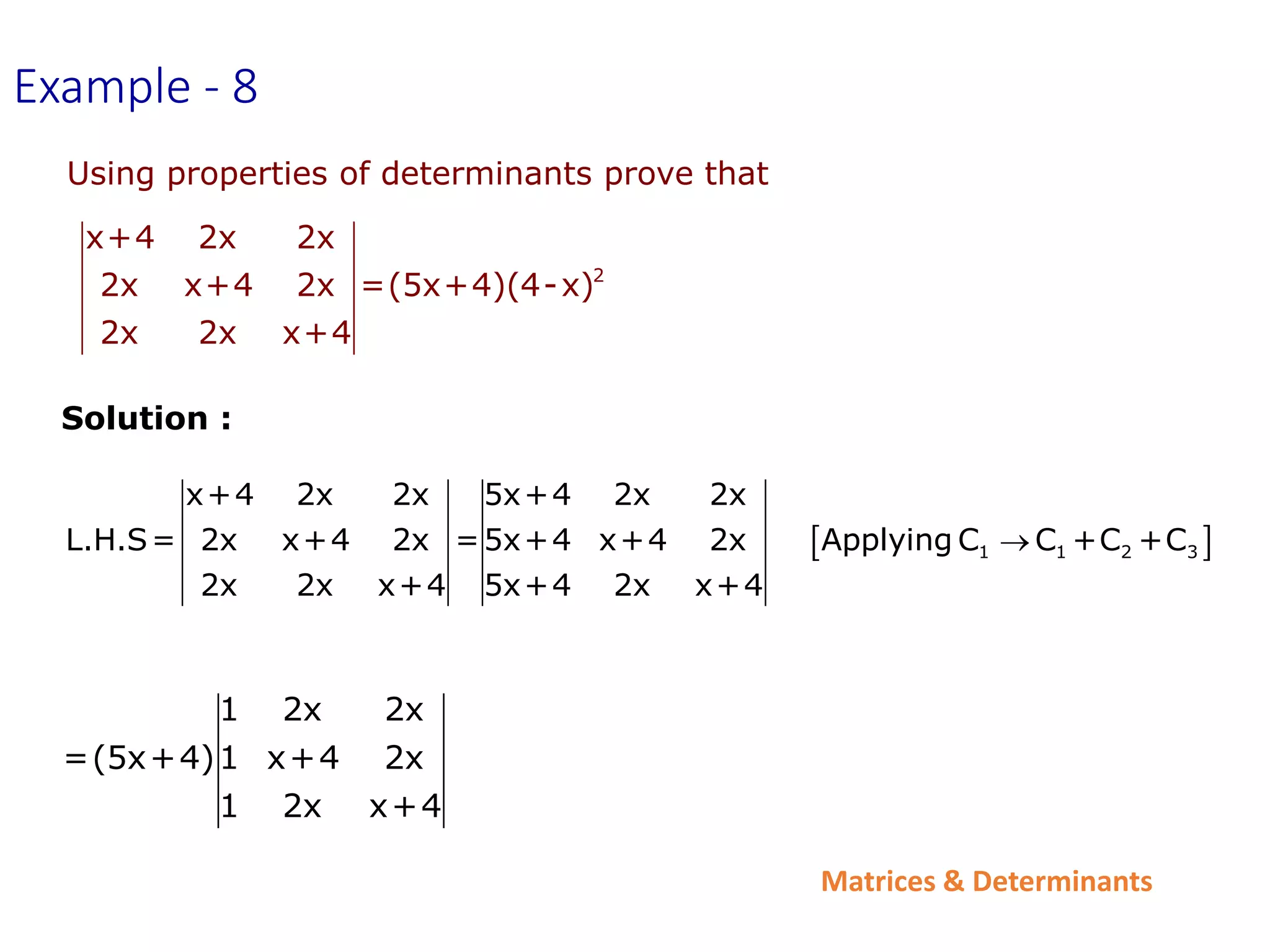
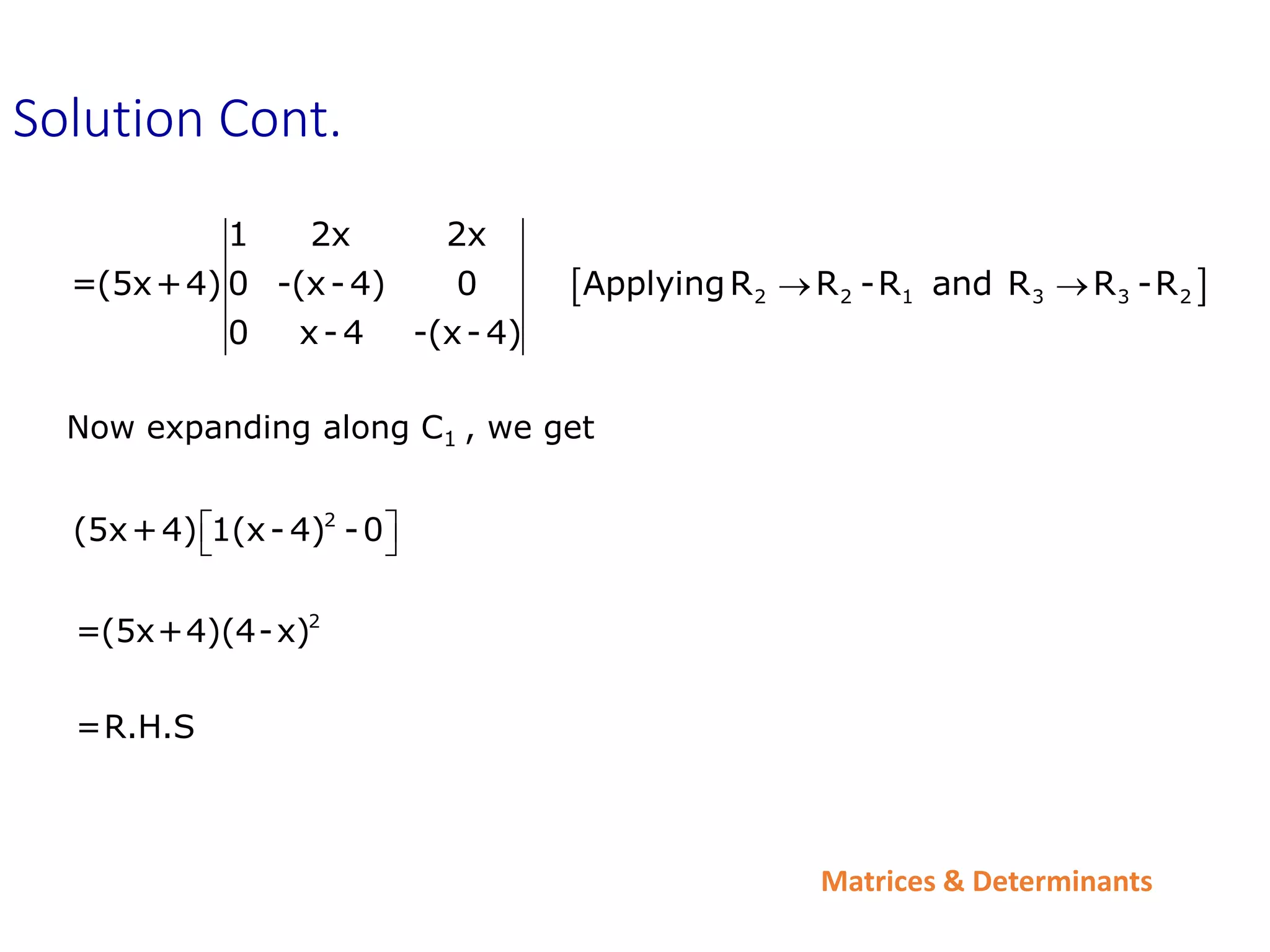
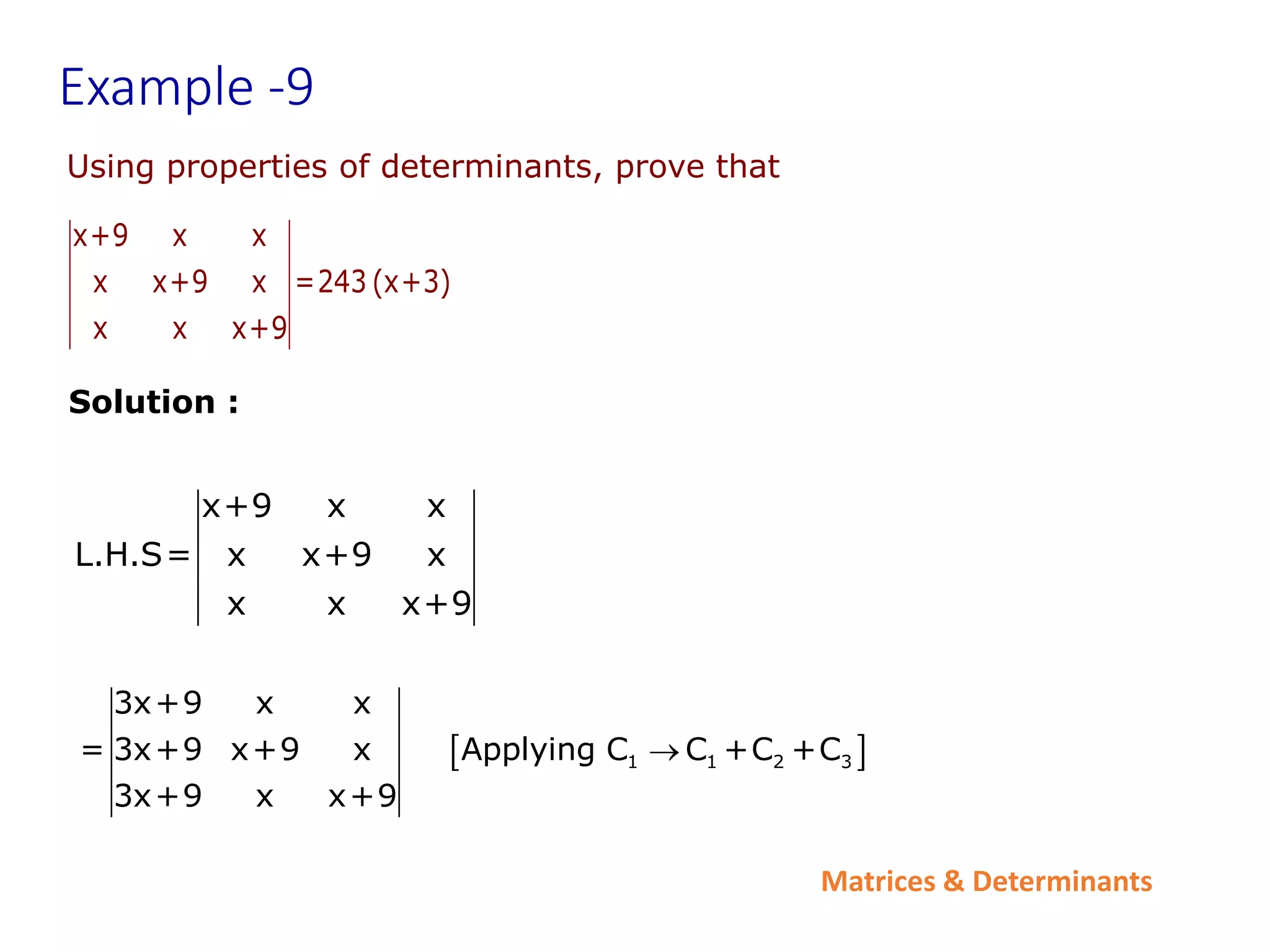

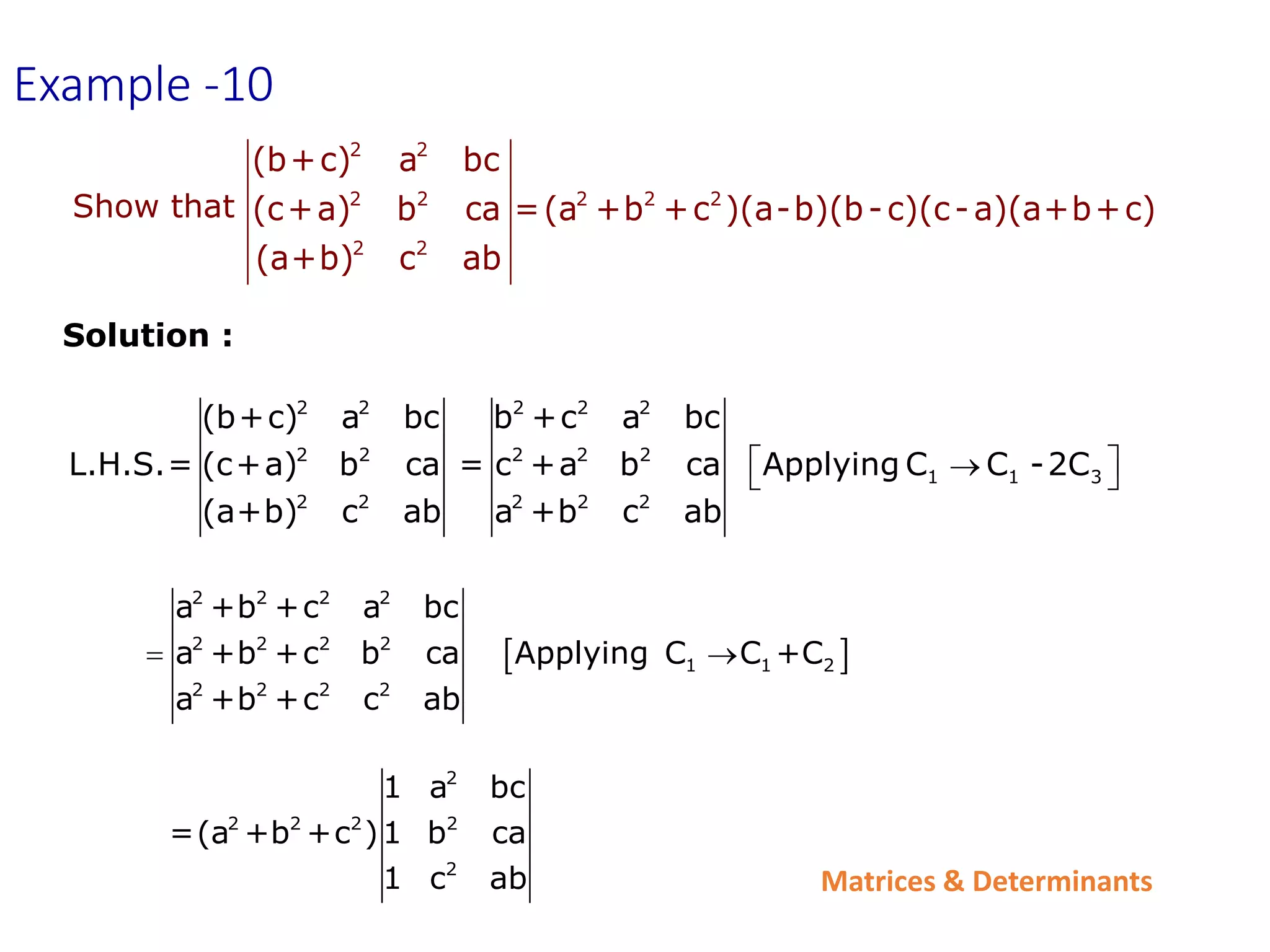
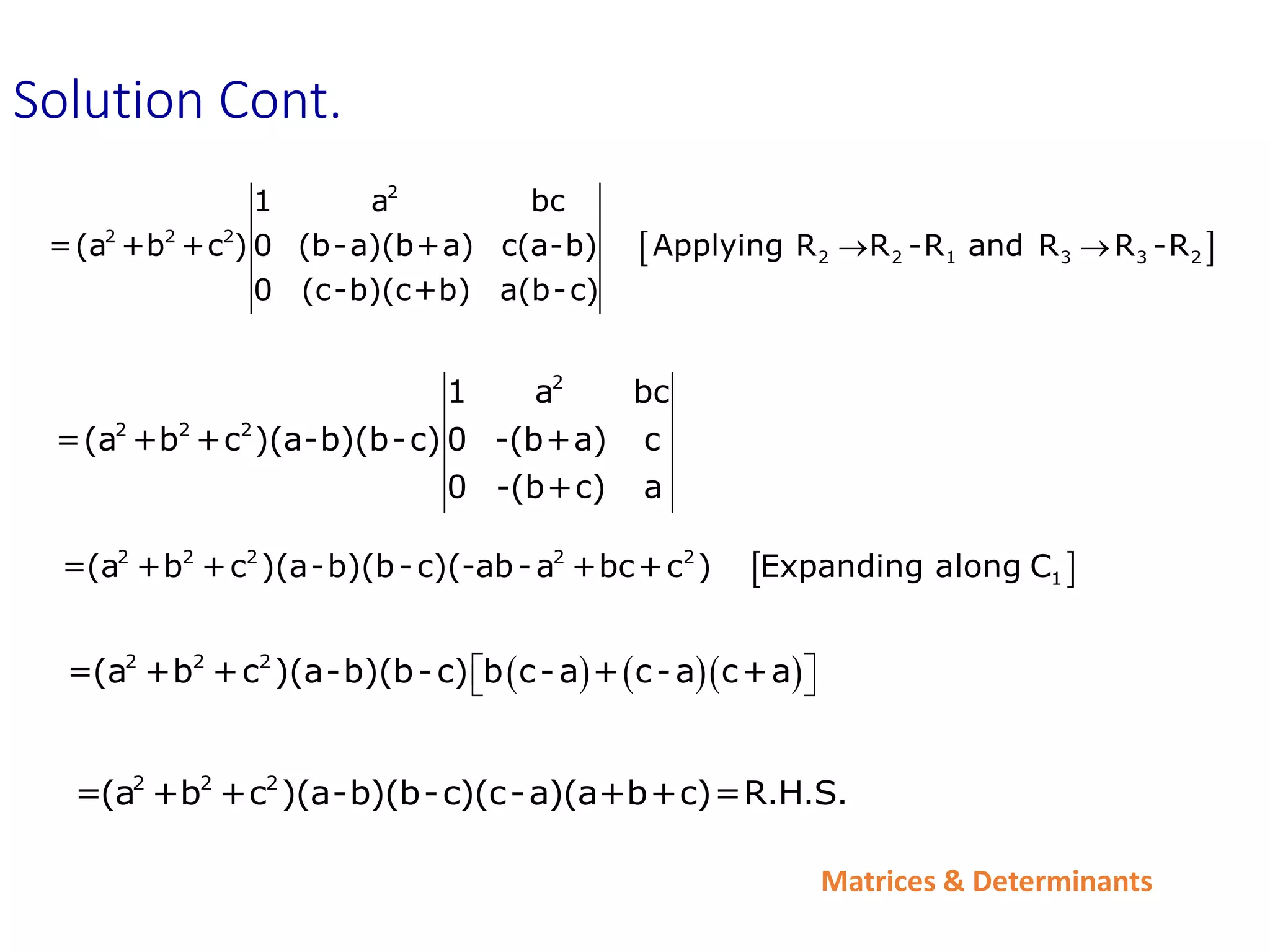
![Matrices & Determinants
Applications of Determinants
(Area of a Triangle)
The area of a triangle whose vertices are
is given by the expression
1 1 2 2 3 3
(x , y ), (x , y ) and (x , y )
1 1
2 2
3 3
x y 1
1
Δ= x y 1
2
x y 1
1 2 3 2 3 1 3 1 2
1
= [x (y - y ) + x (y - y ) + x (y - y )]
2](https://image.slidesharecdn.com/introductionofdeterminant-210609085550/75/Introduction-of-determinant-40-2048.jpg)
